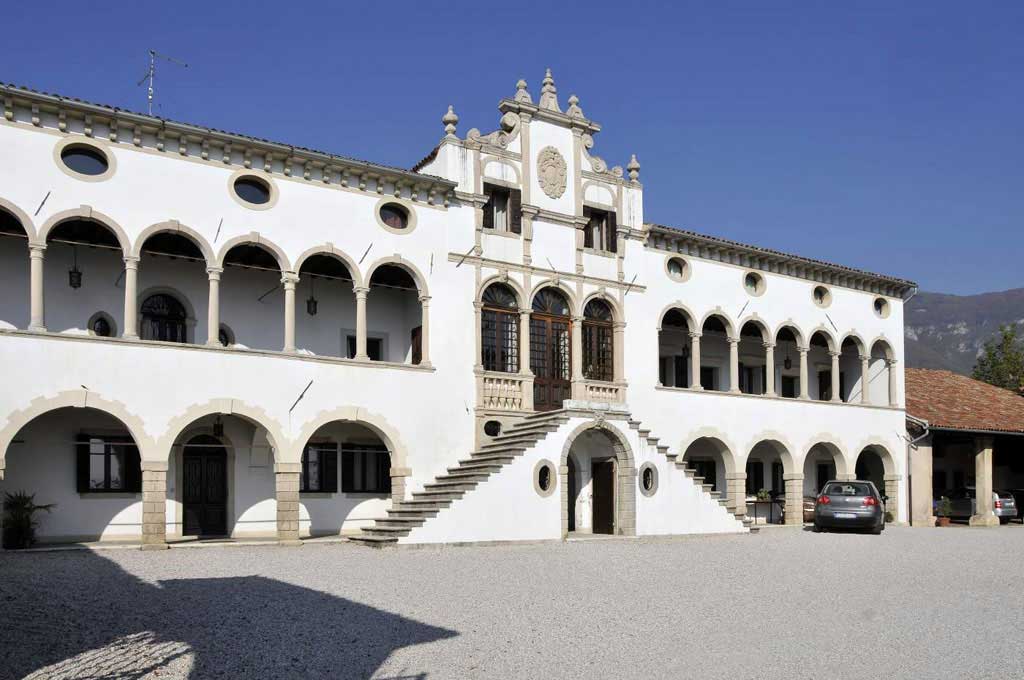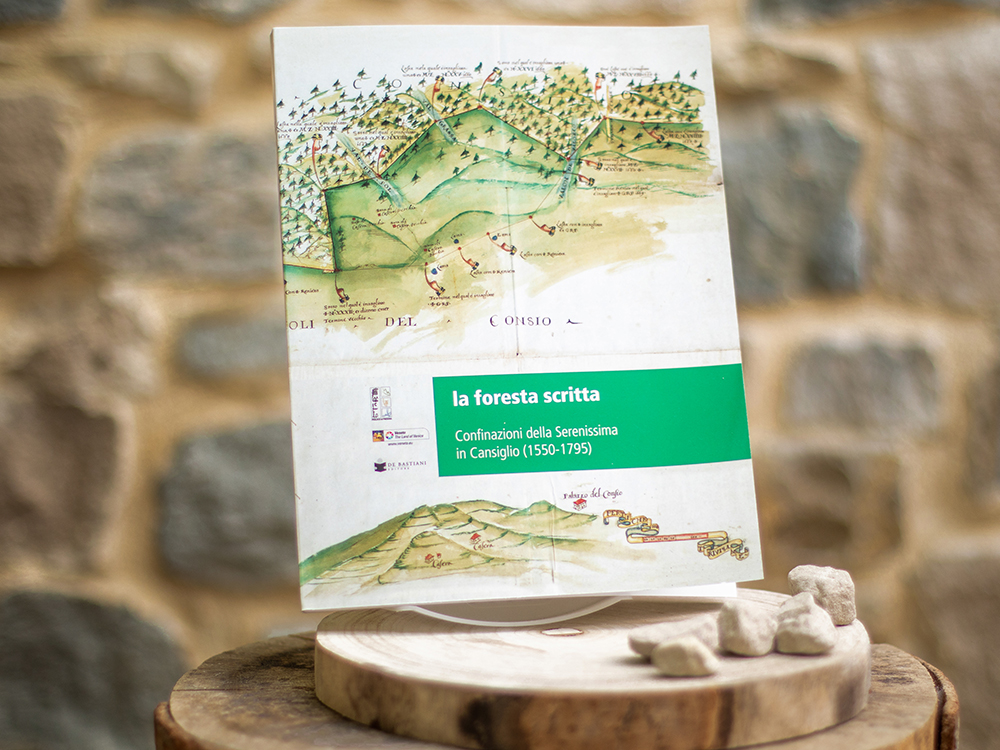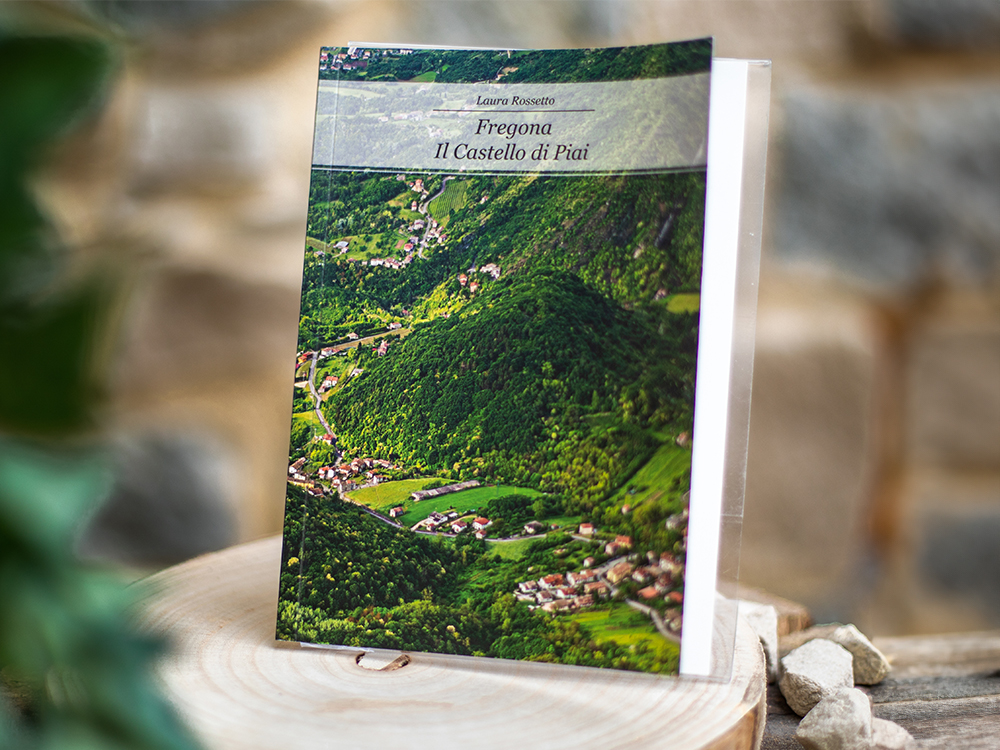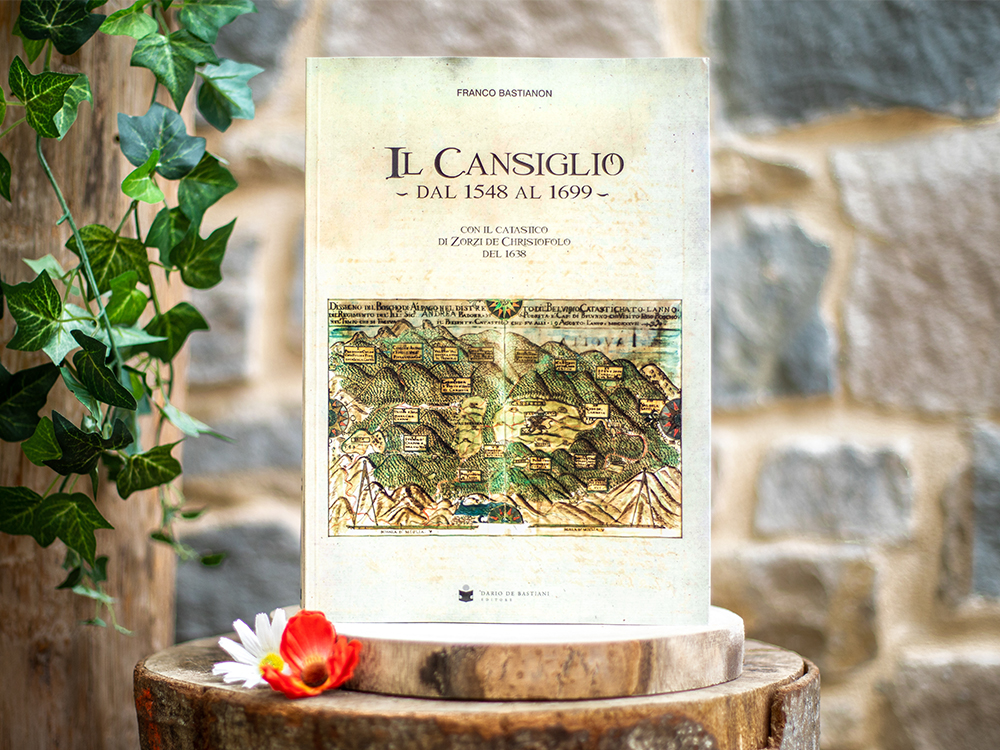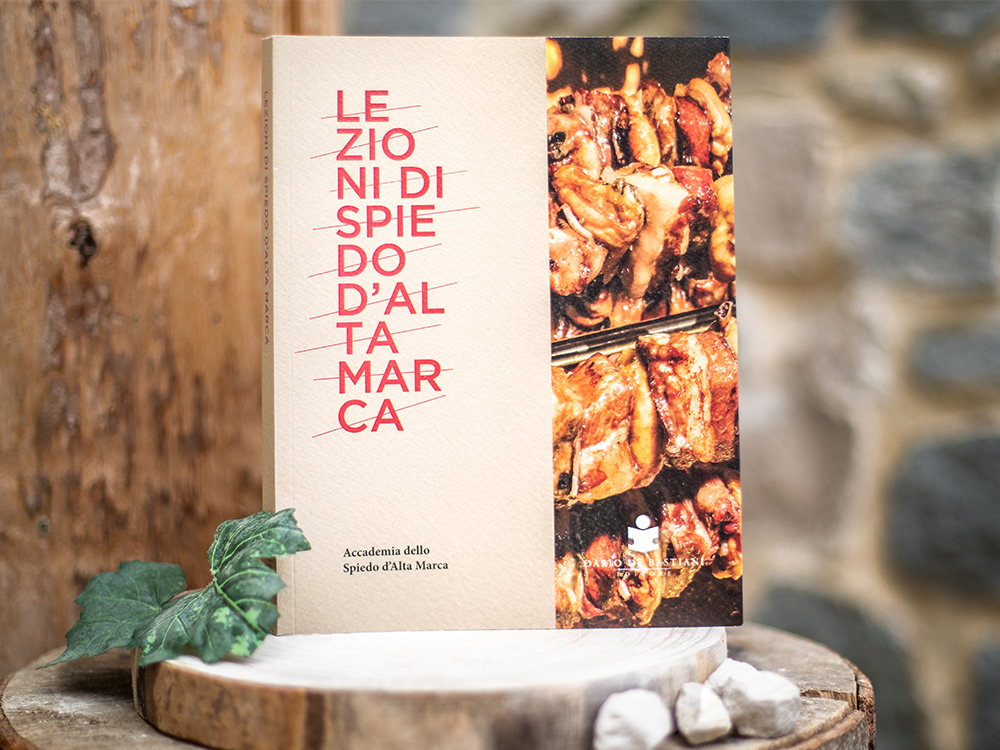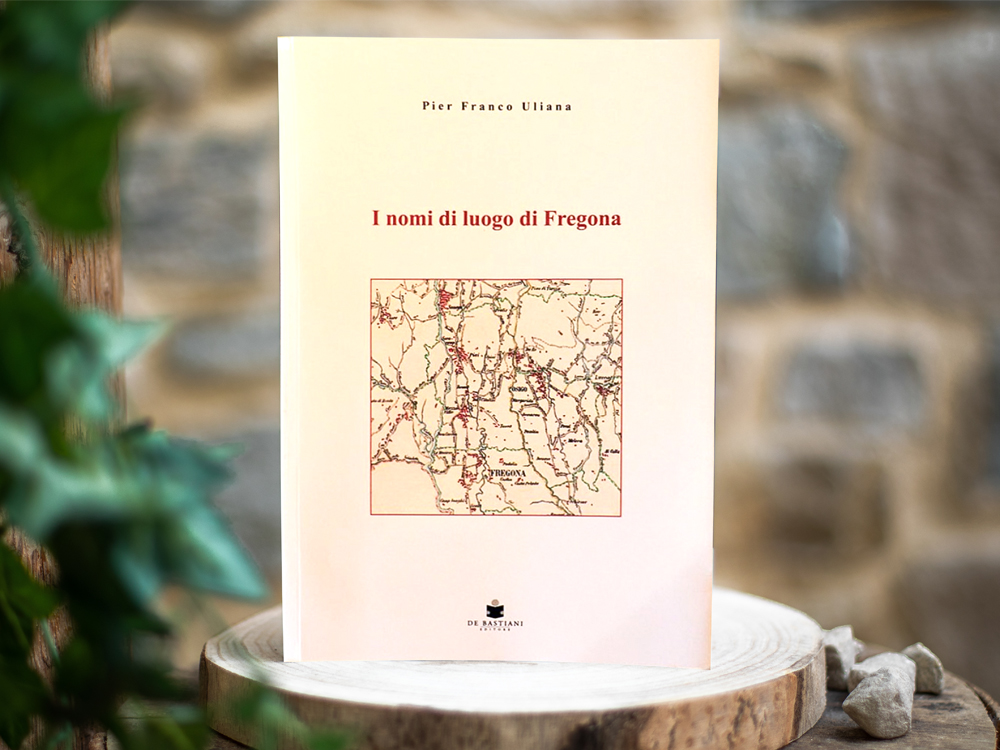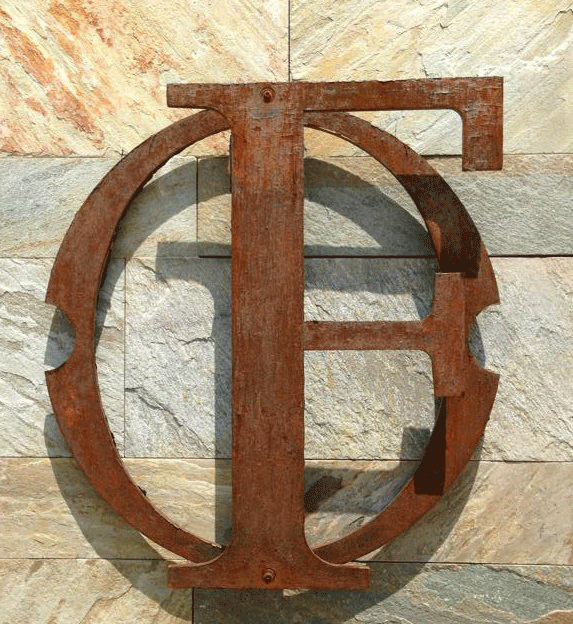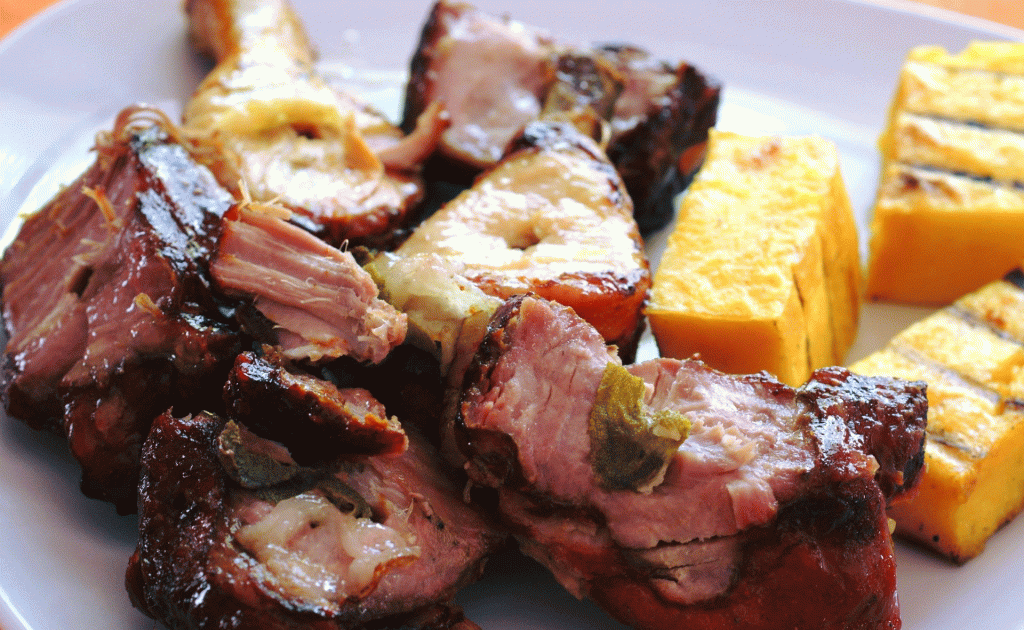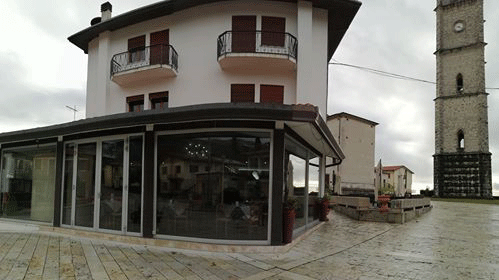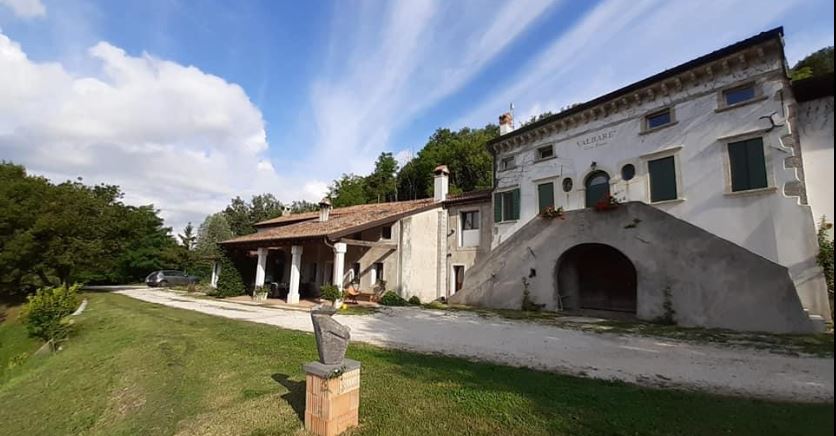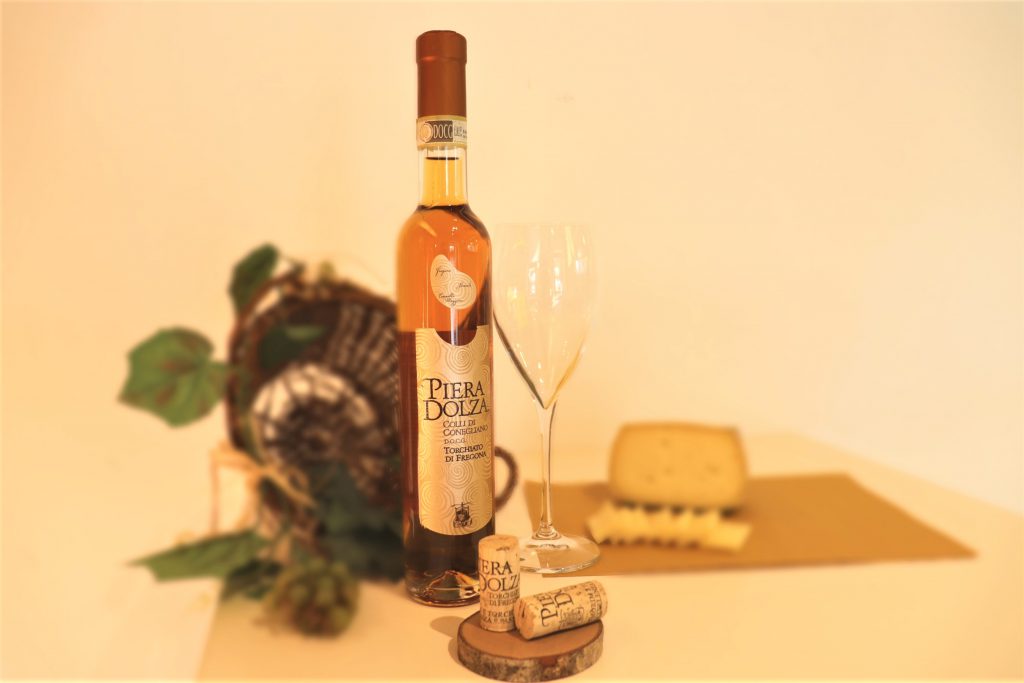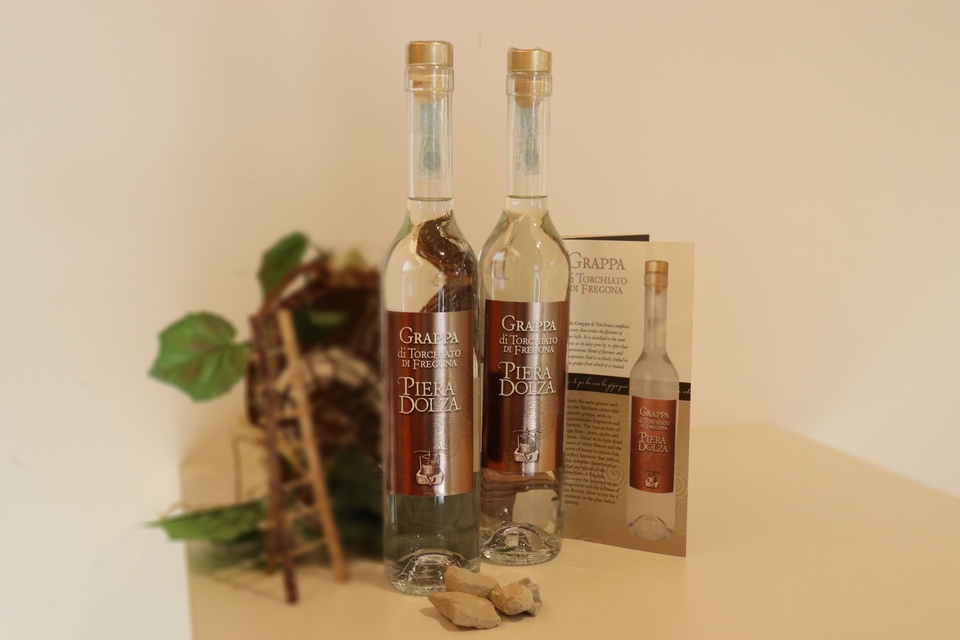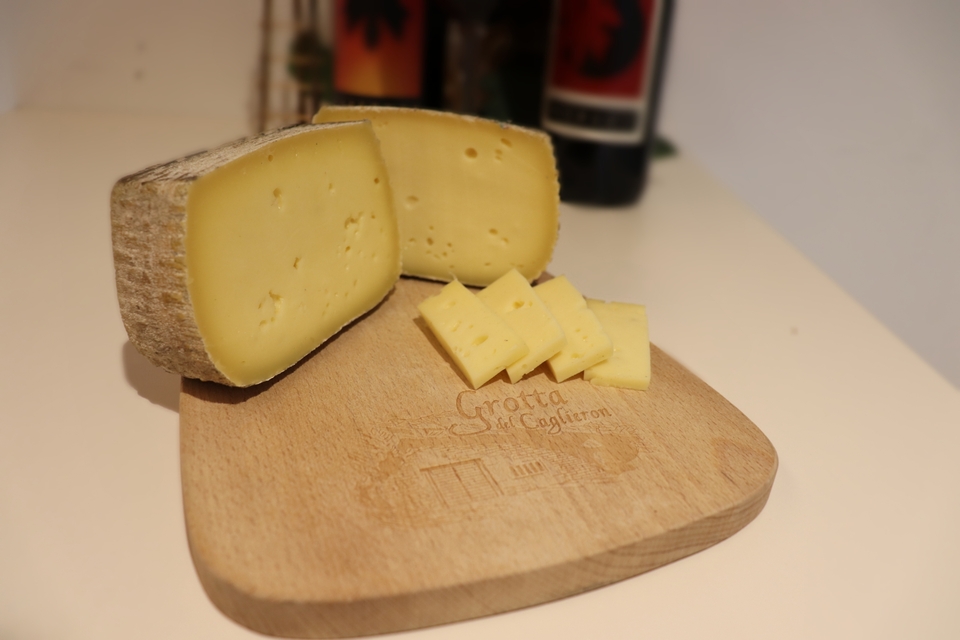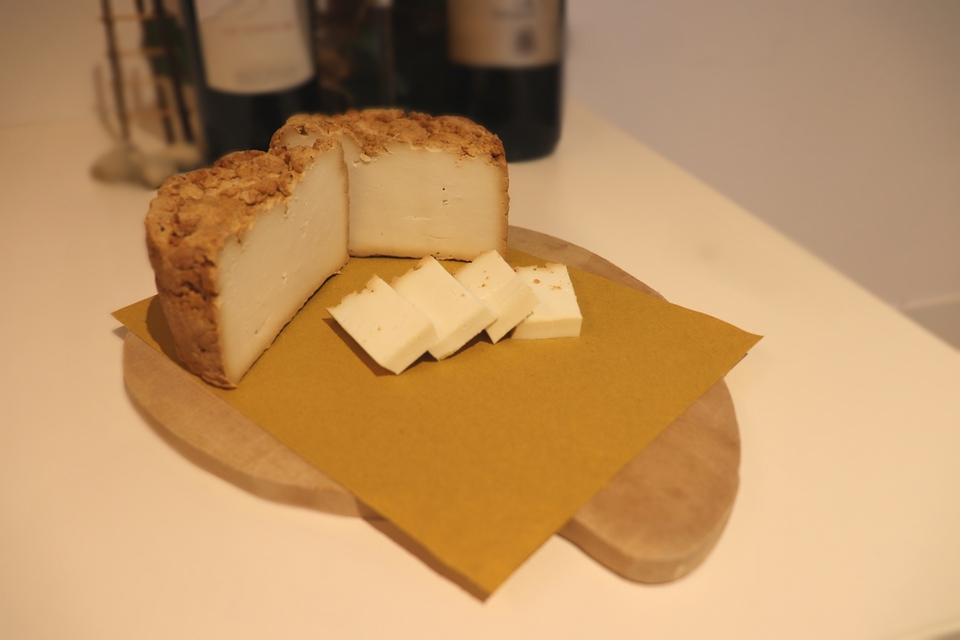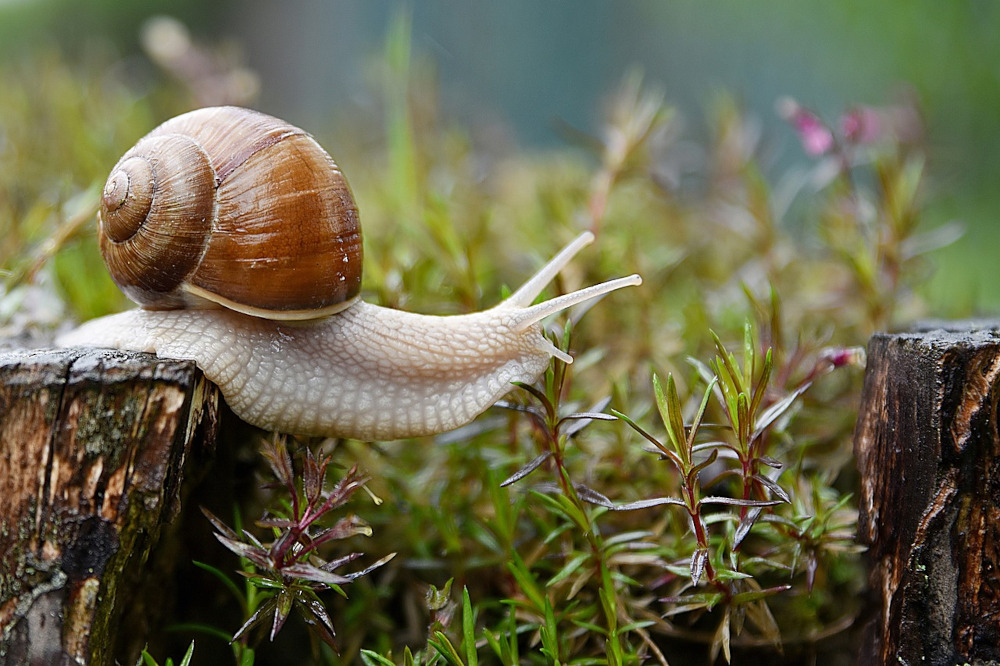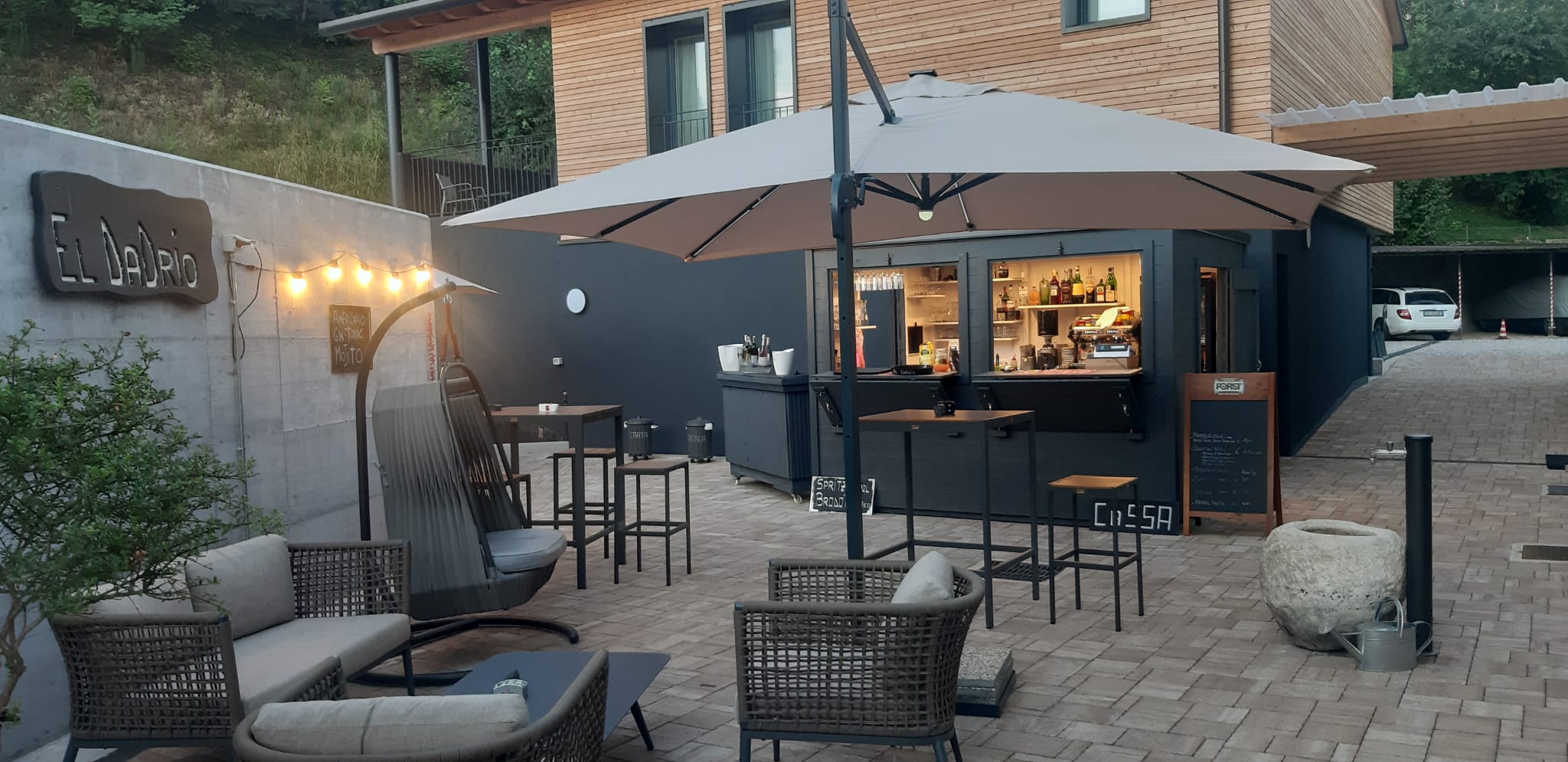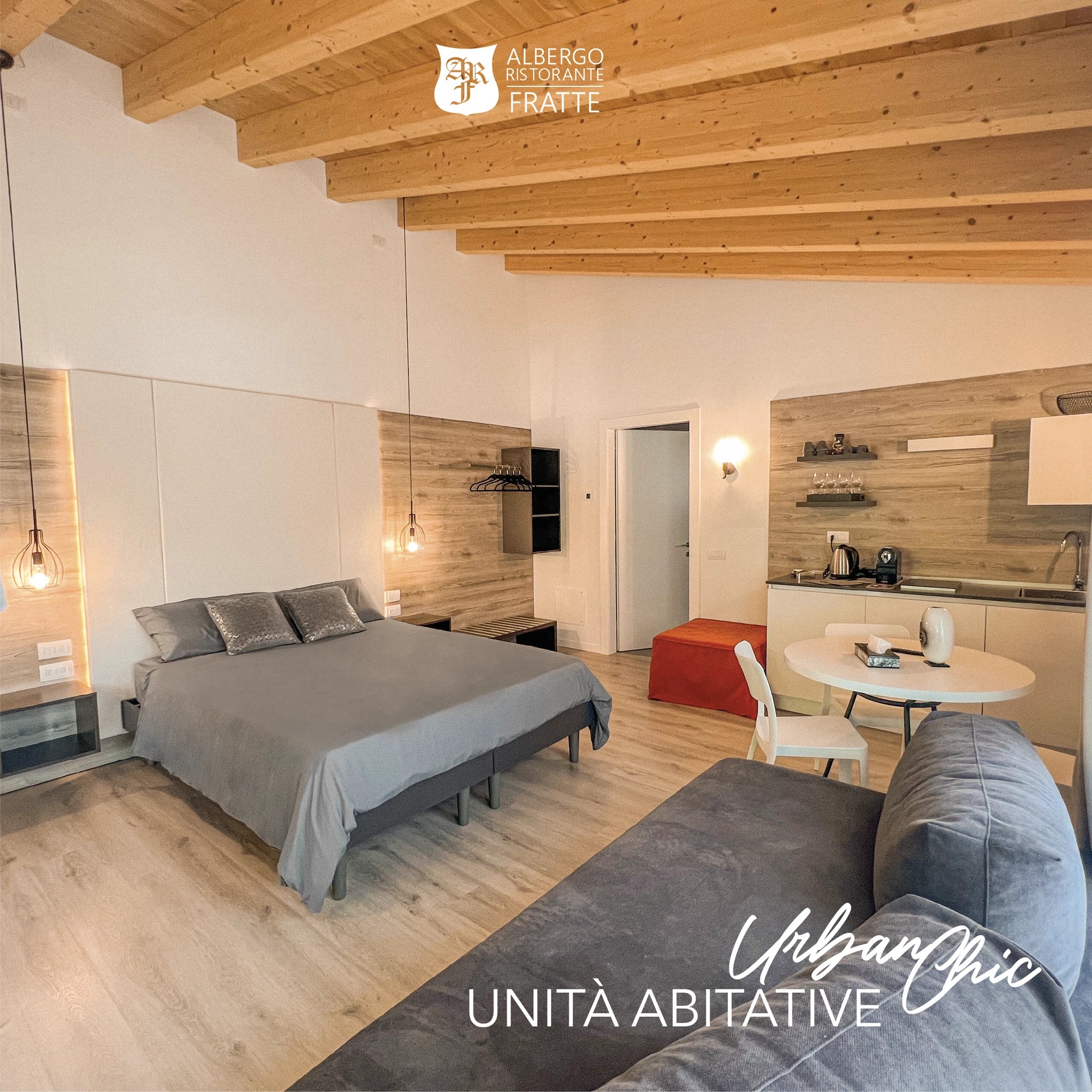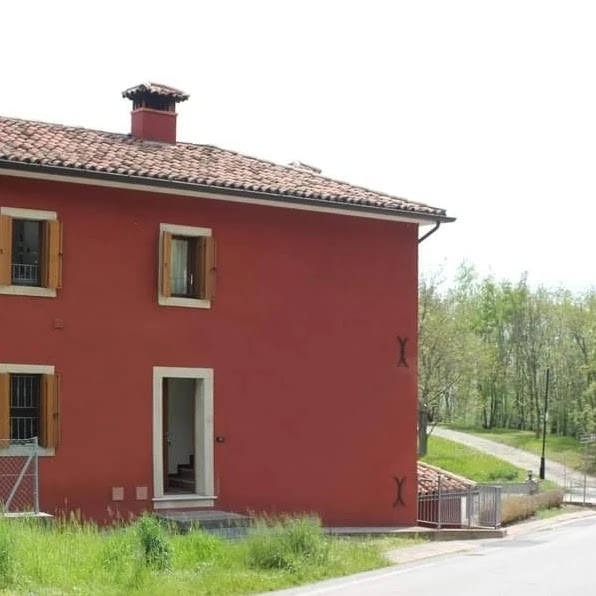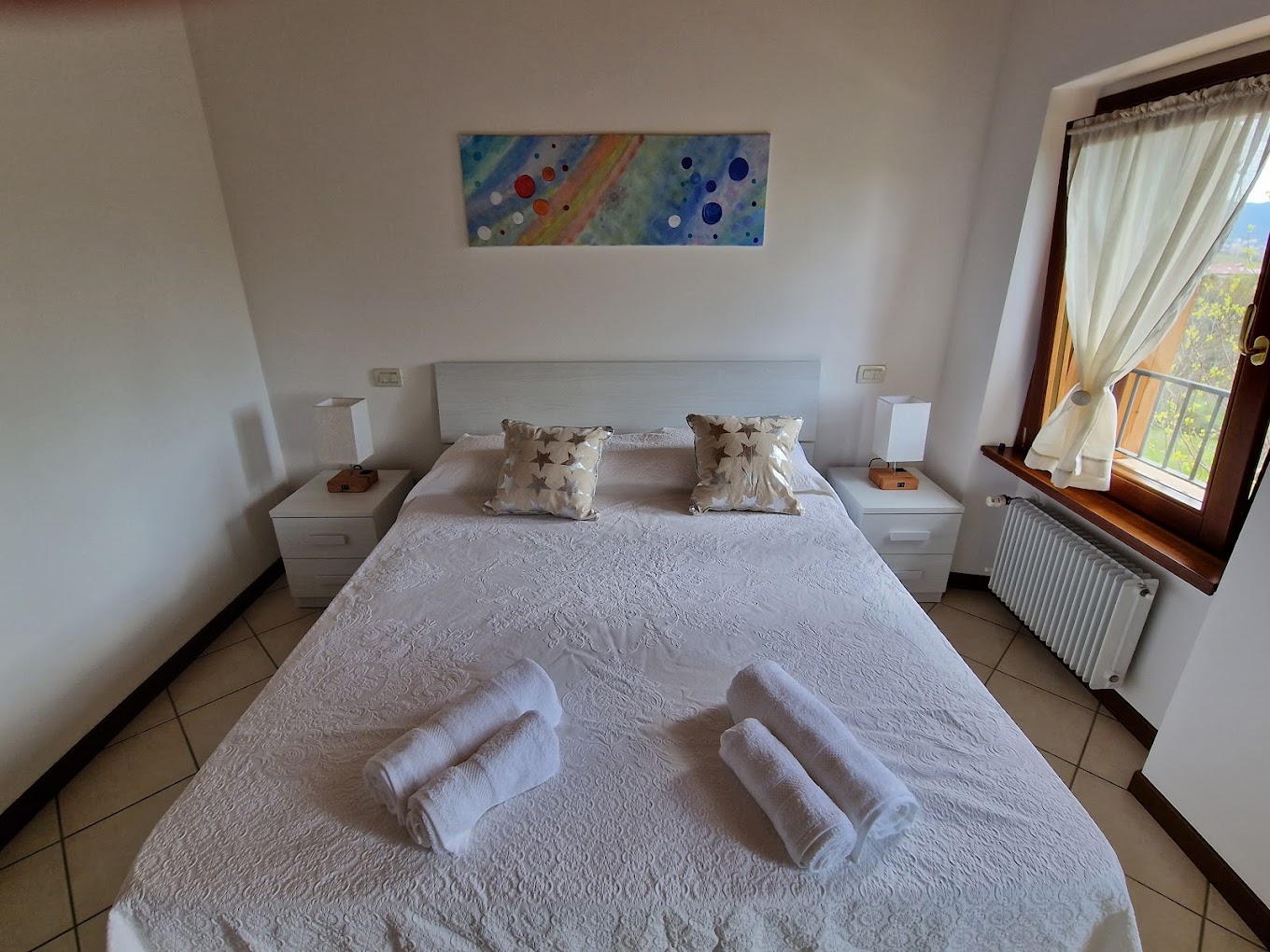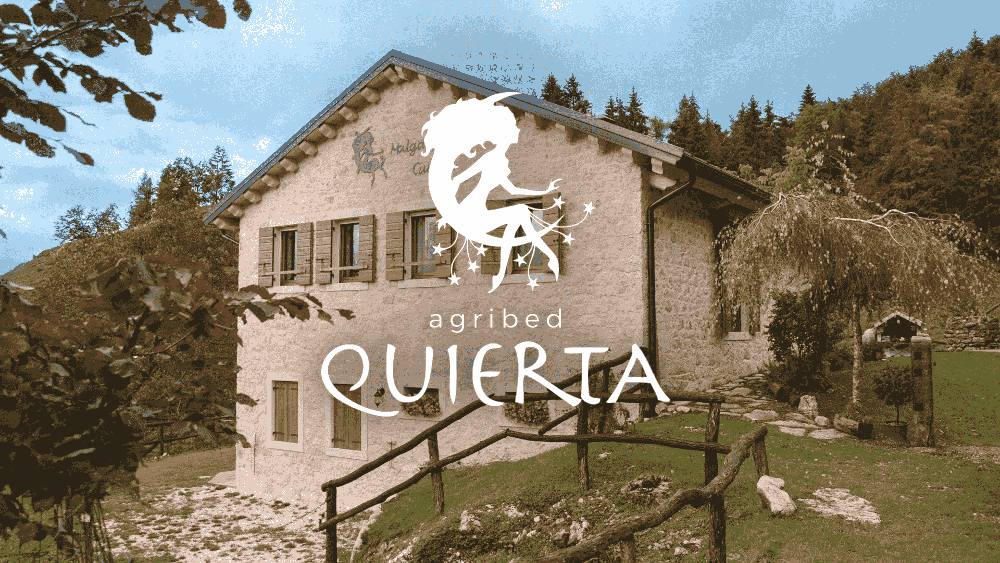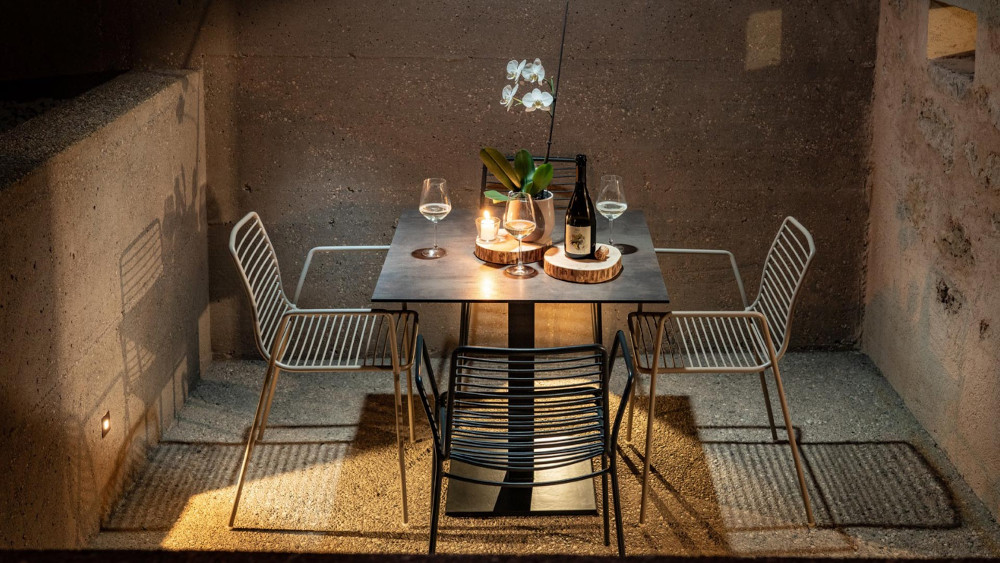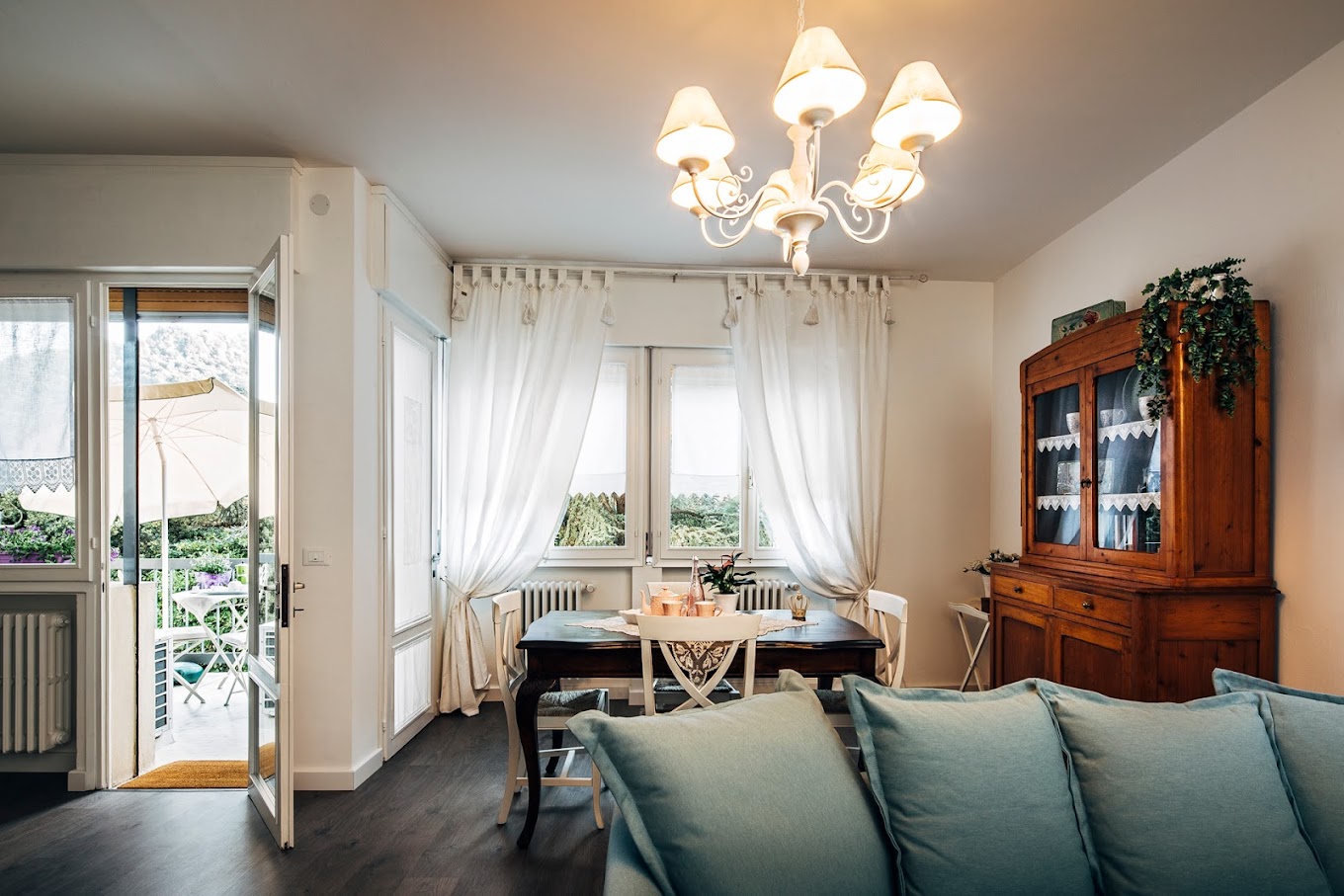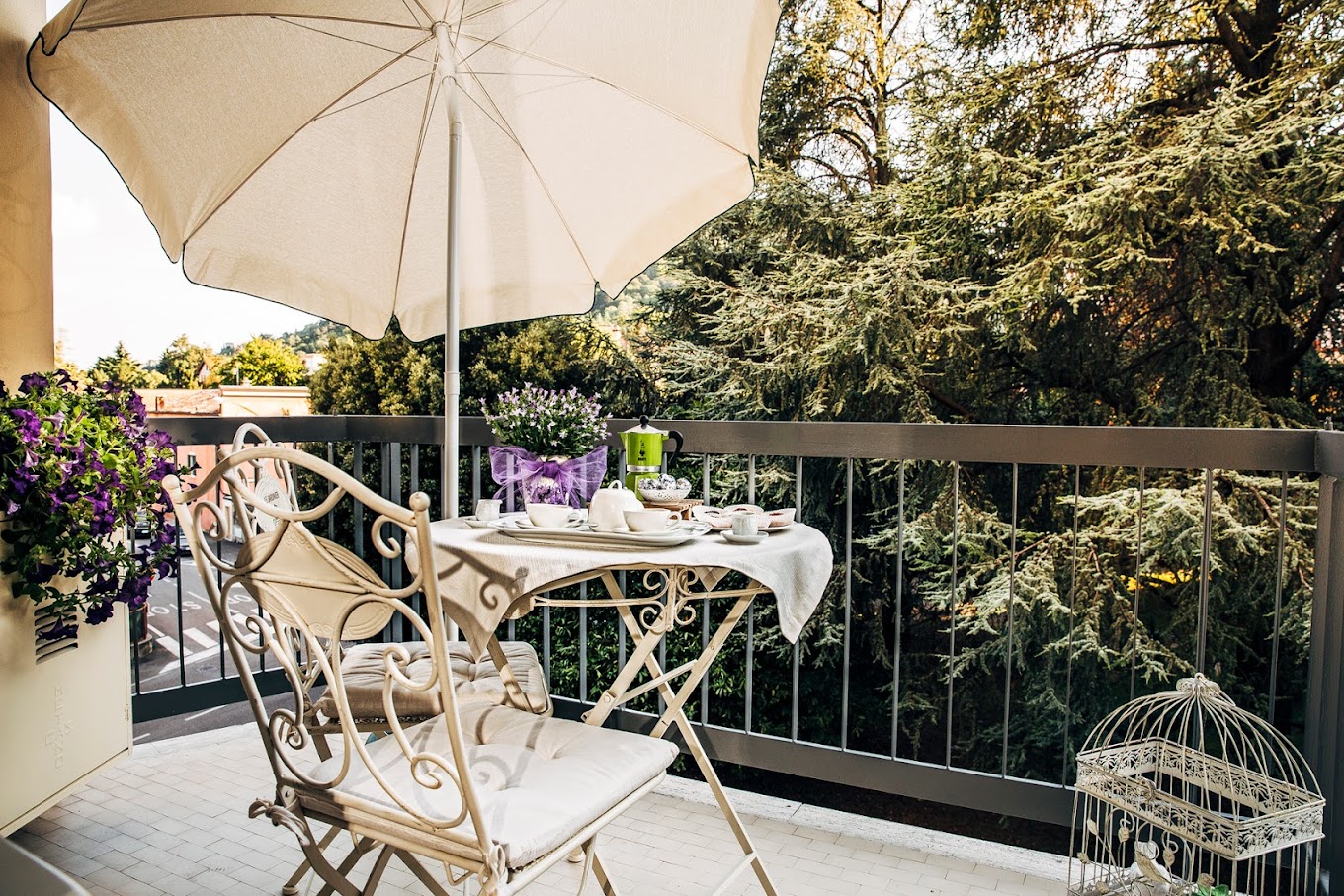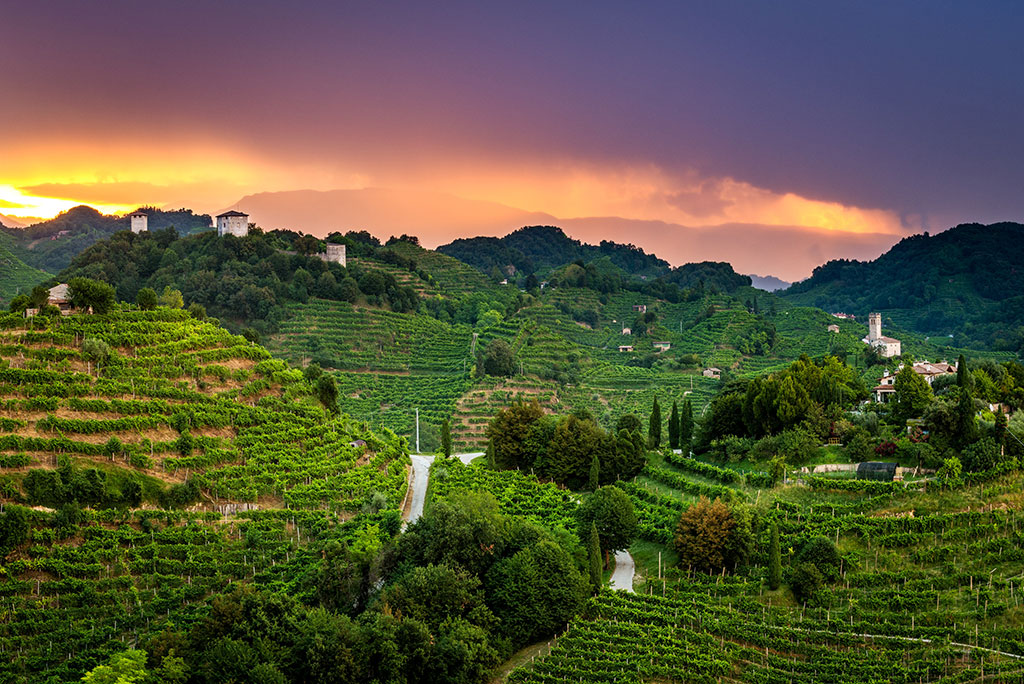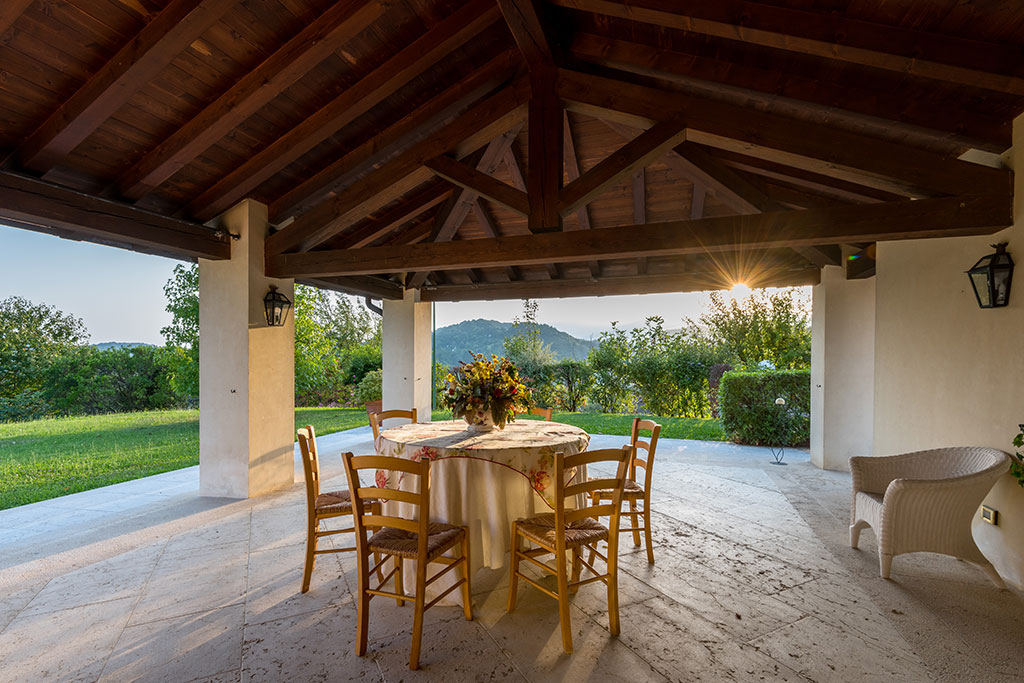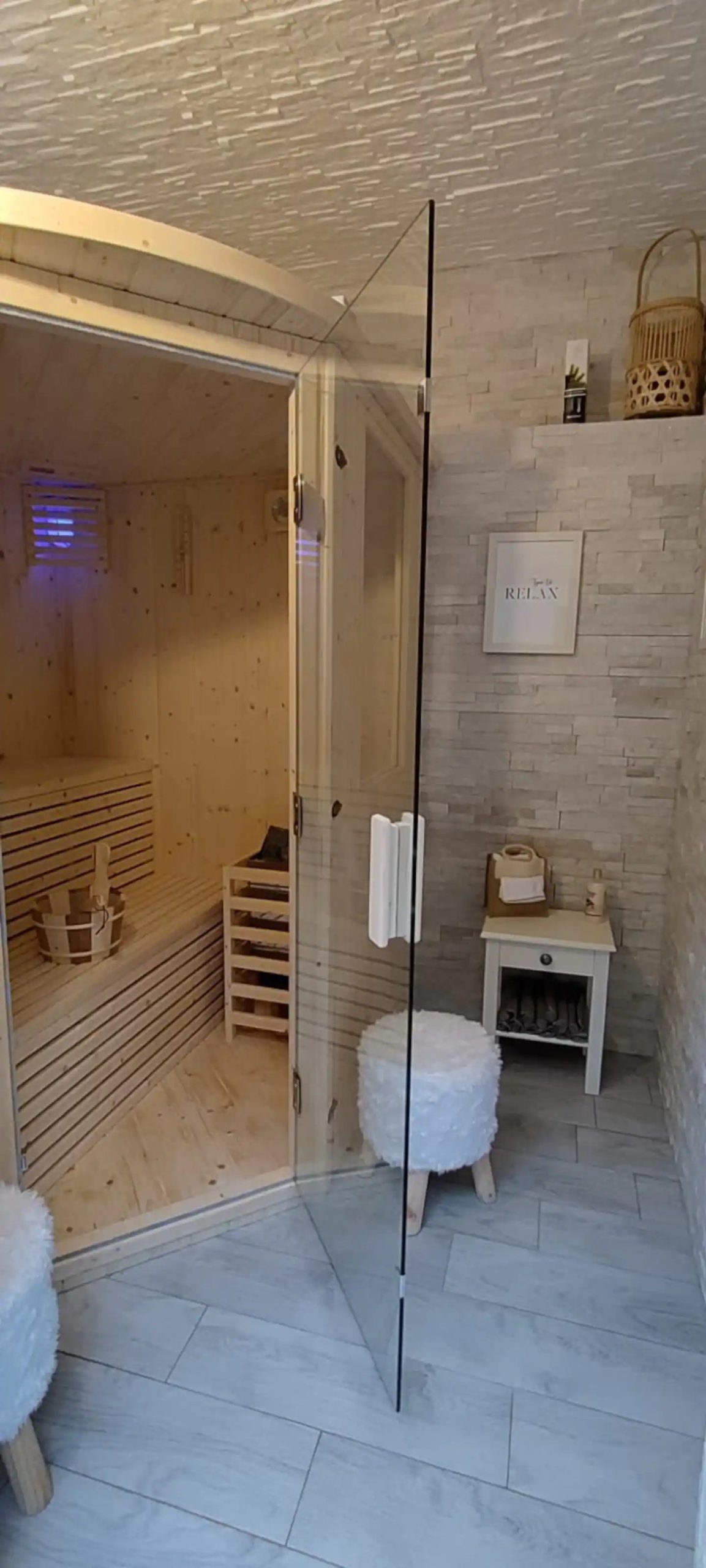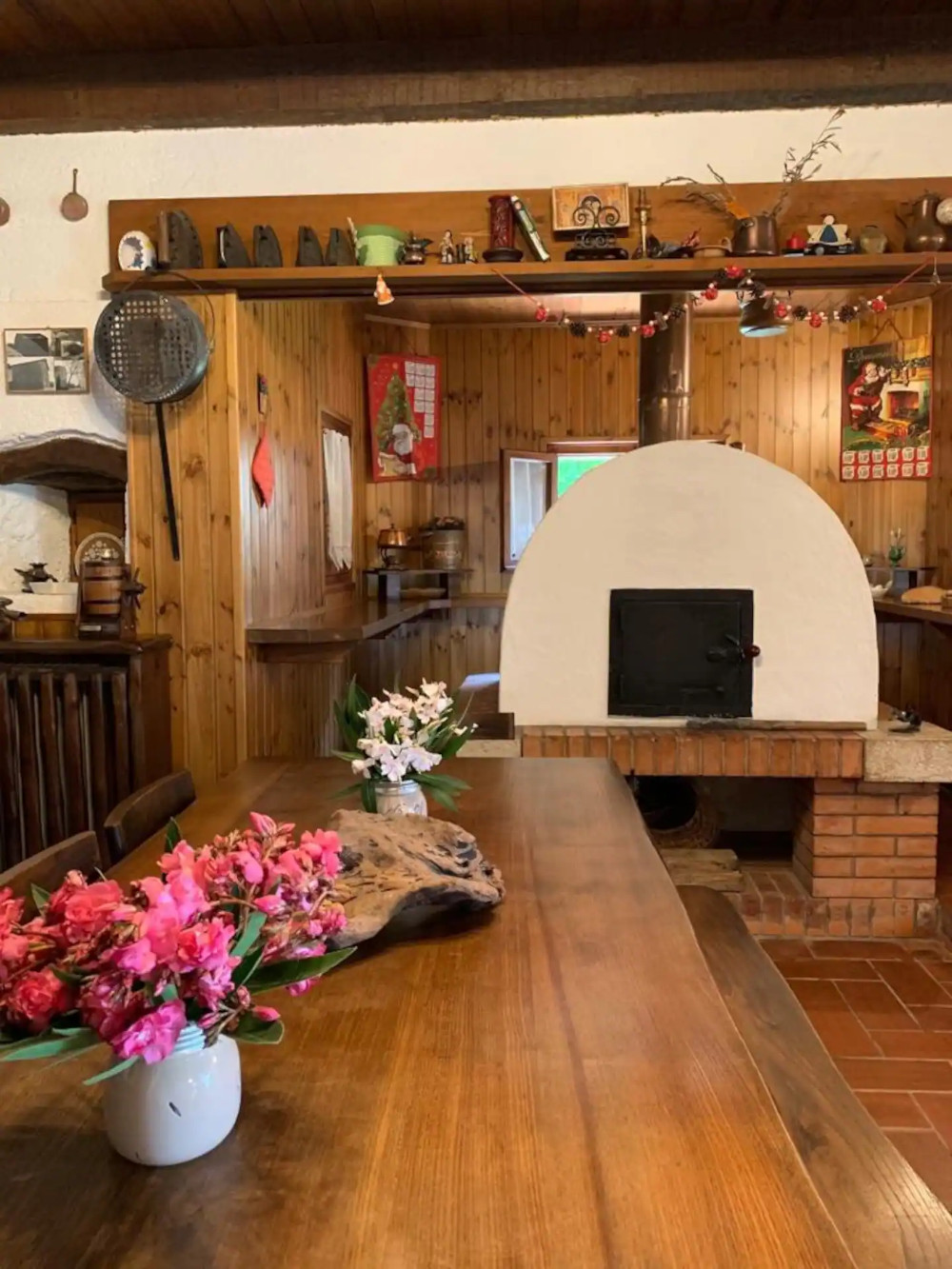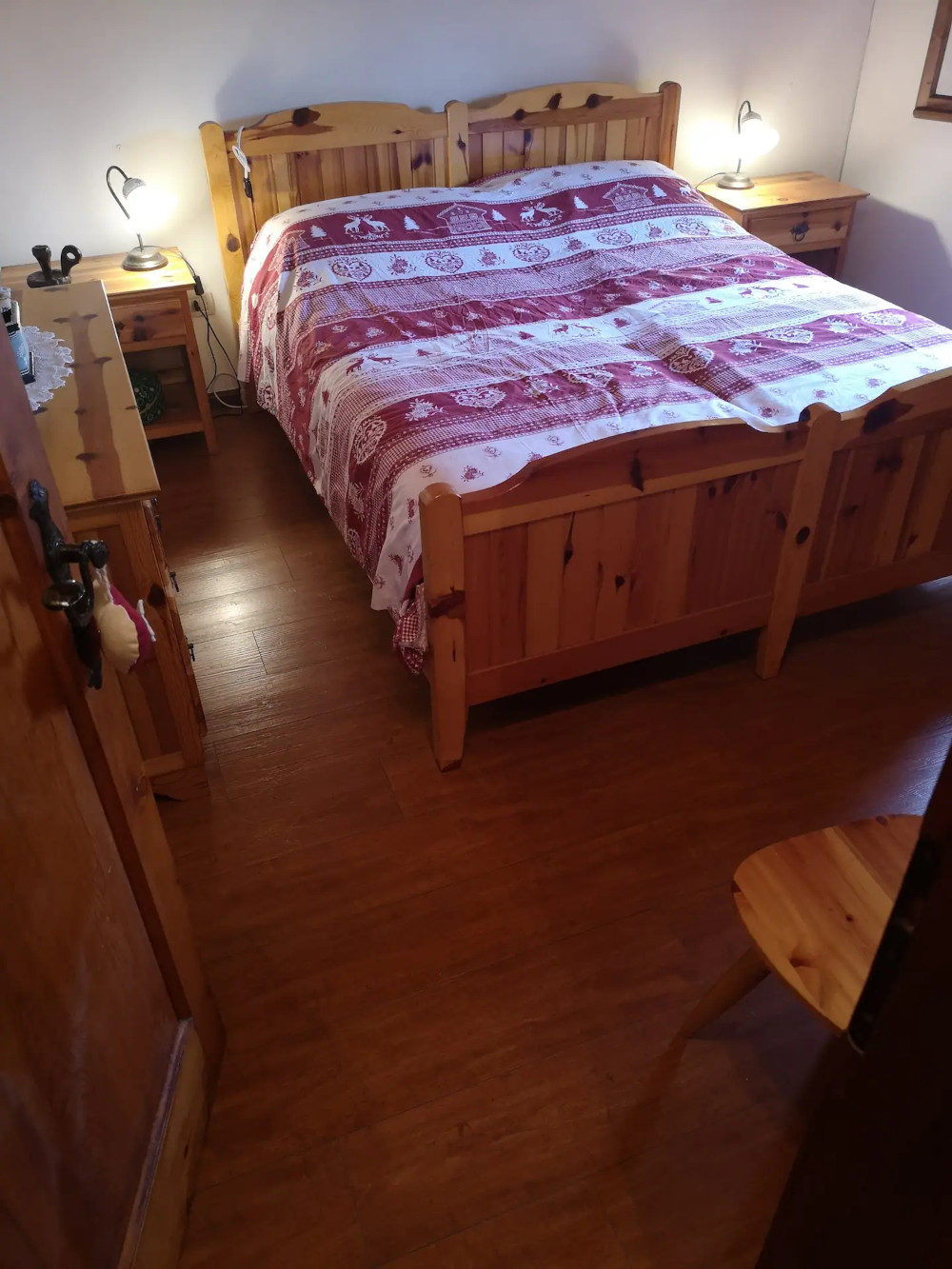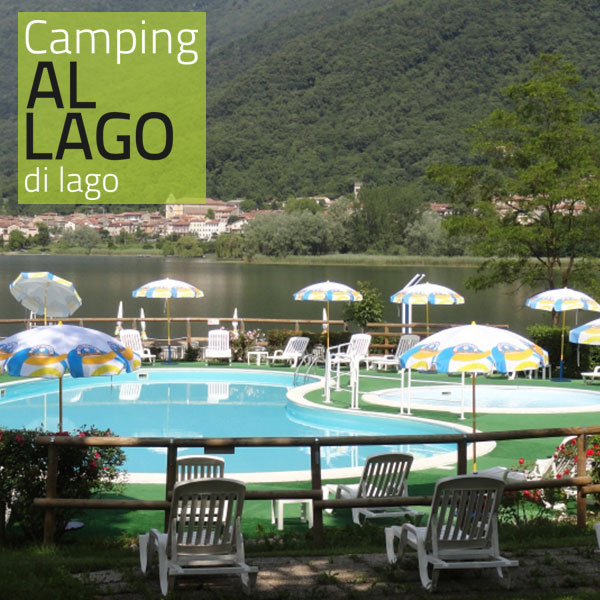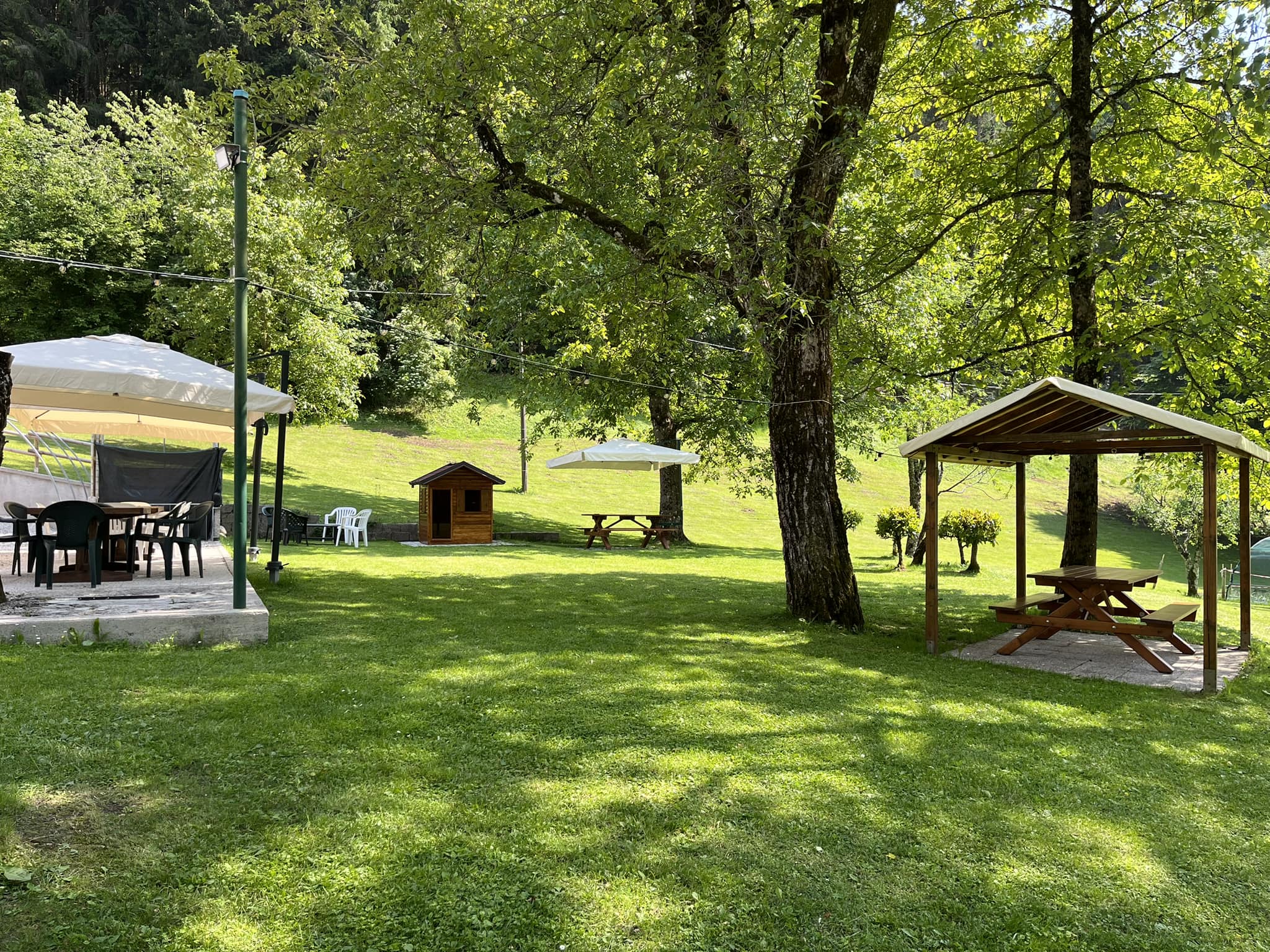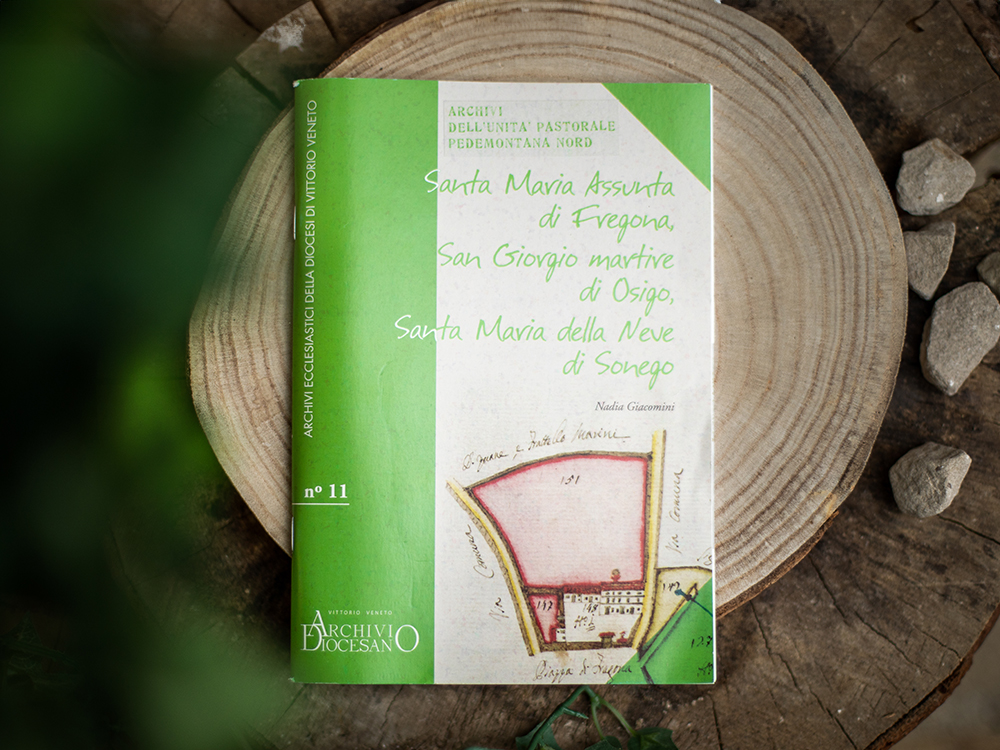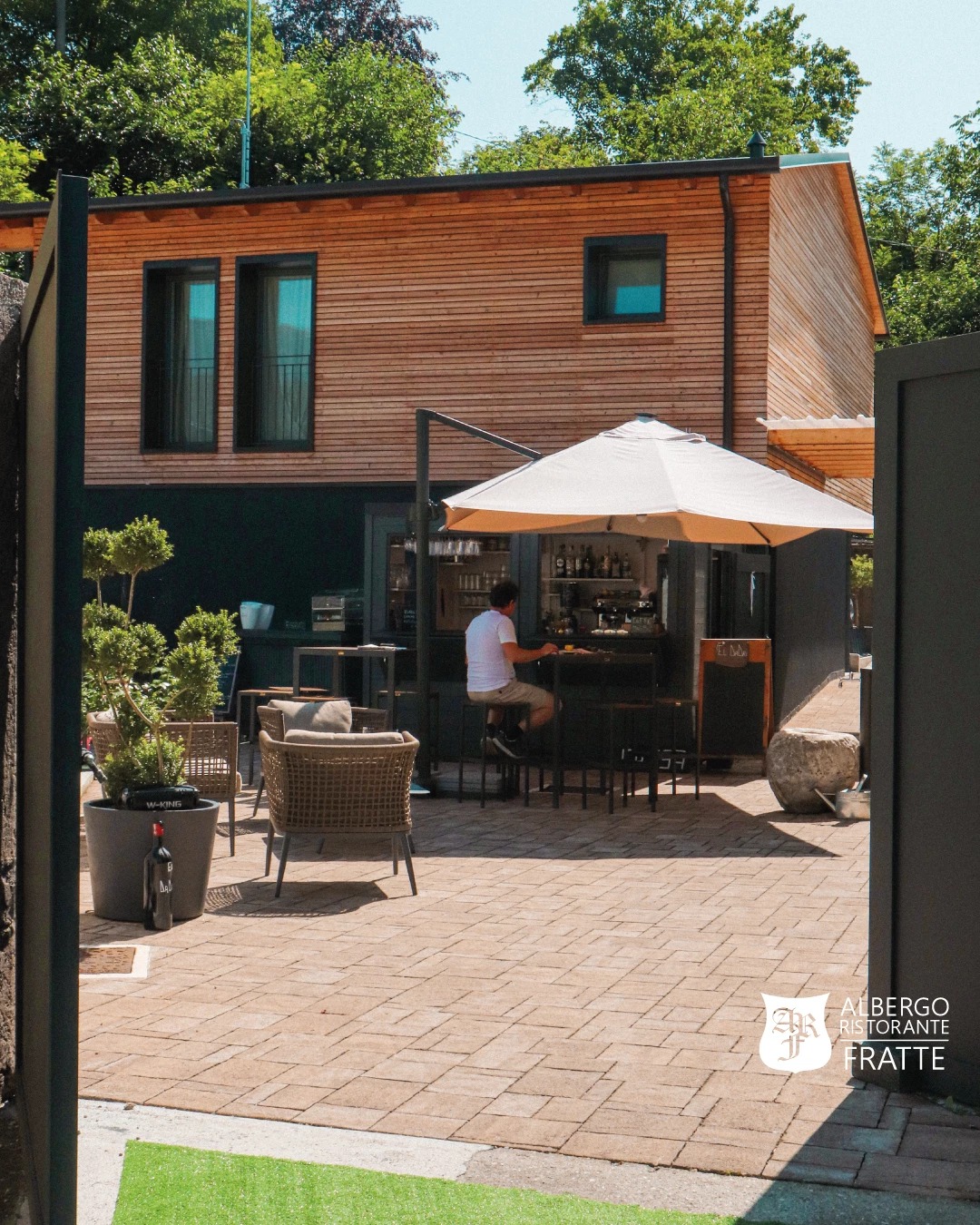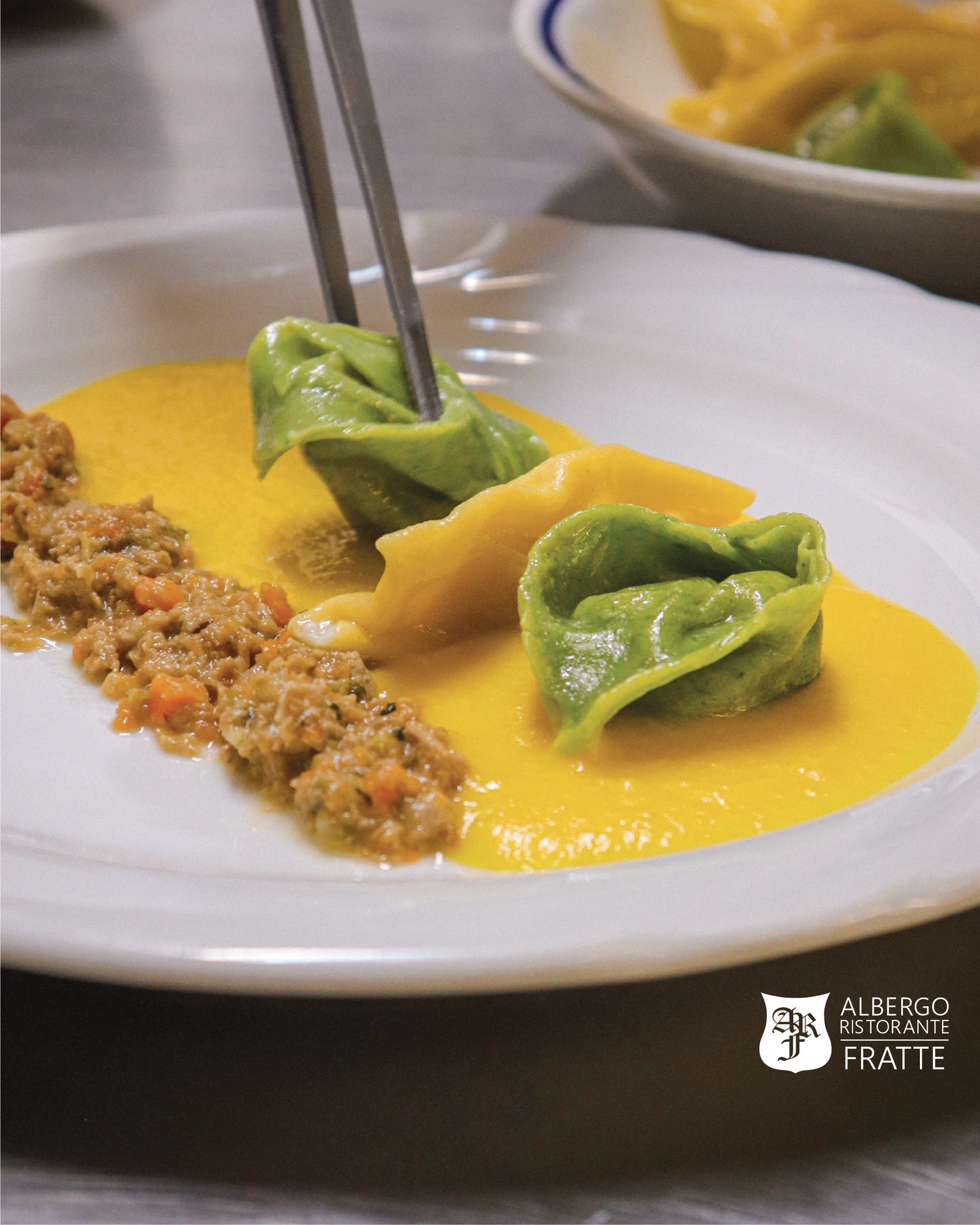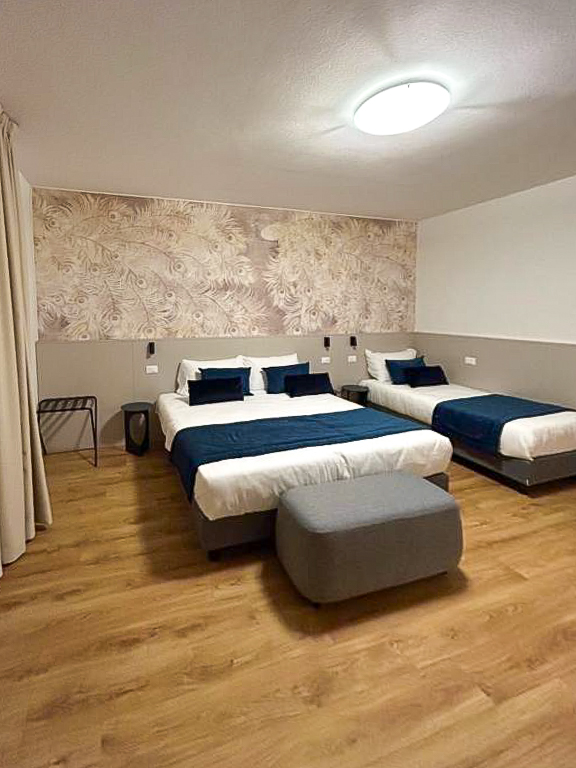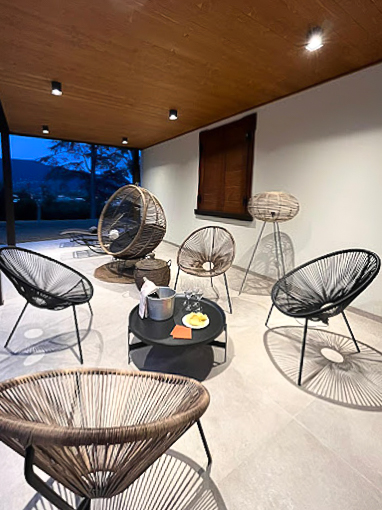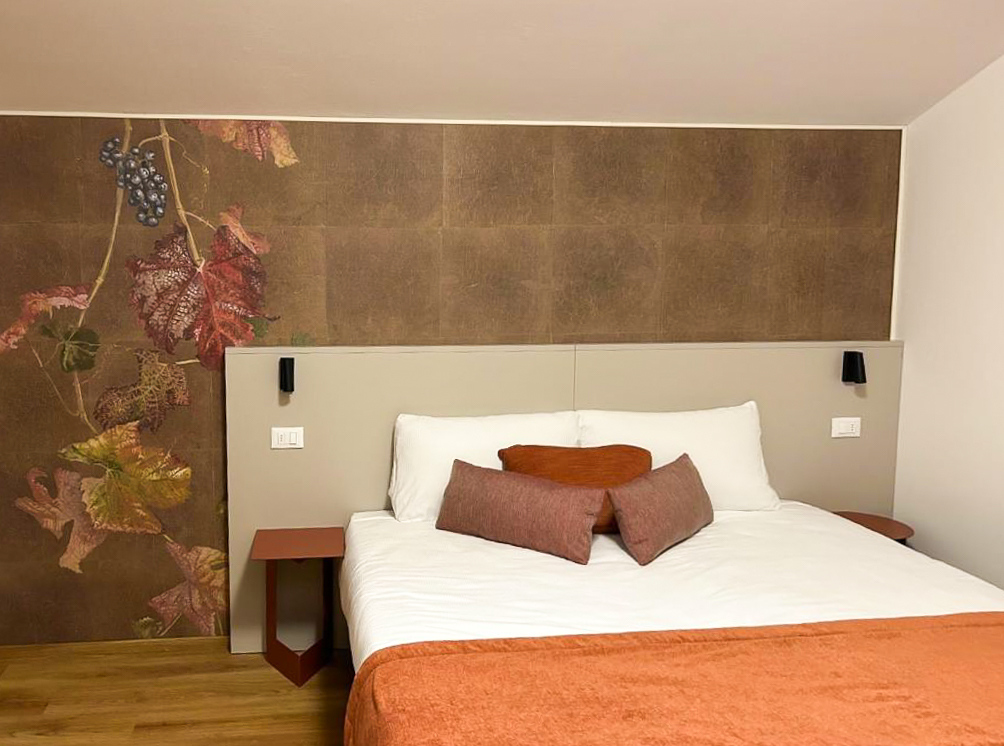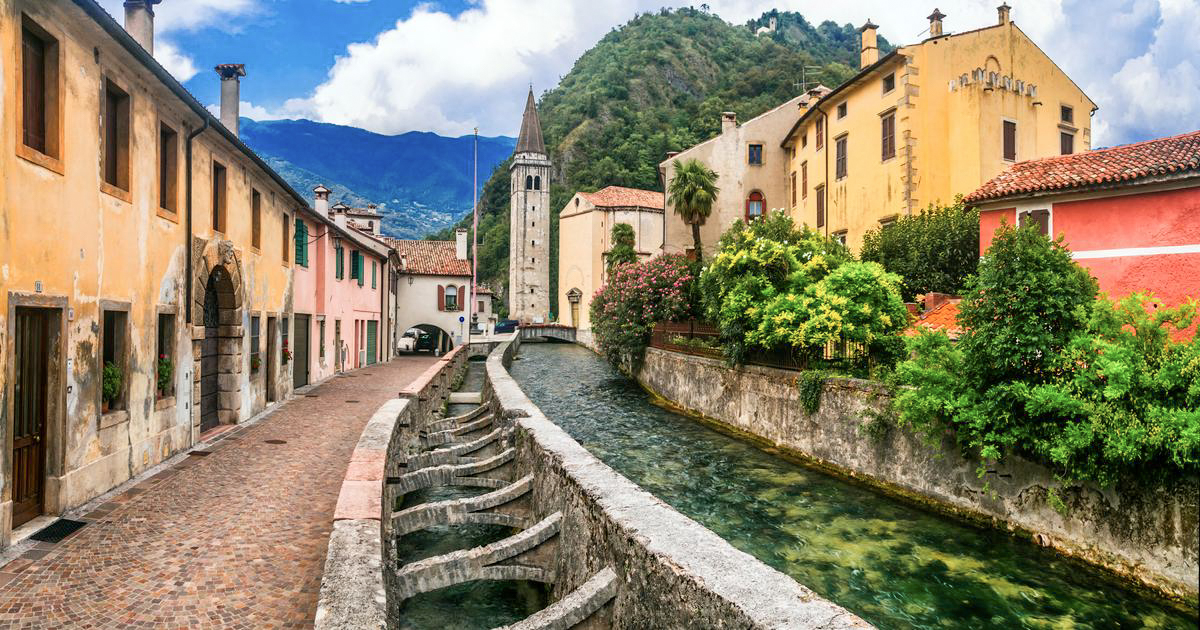Home -> Discover more -> Fregona
Ruins of Piai Castle
History
The Piai Castle reached its peak during the rule of the Da Camino Lordship in the 13th-15th centuries: confirmed by a solid wooden safe, covered with iron sheets with orthogonal pattern secured to the support with riveted nails. This safe belonged to the last castellan Salatino Scotti until 1423 and is now preserved in the archpriest church of Fregona (a chest identical to this, including the complex security mechanism housed on the lid but smaller in size, can be found at the Gorizia Castle).
Situated on the namesake hill in the panoramic view at the foot of Monte Pizzoc, extreme western offshoot of the massif of Cansiglio-Cavallo, it has Roman origins as control station, along the valleys of the rivers Carron and Friga, tributaries of the Meschio, connected with the road that climbed up toward the plateau of Cansiglio and of Alpago, in connection, also visual, with the strongholds of Serravalle and Ceneda at west, and with the fortified settlement late-ancient of King Matruch at south, in the locality of Nastego at the Fratte and to east with those of the hill of San Daniele, above Osigo, and Montaner in municipality of Sarmede.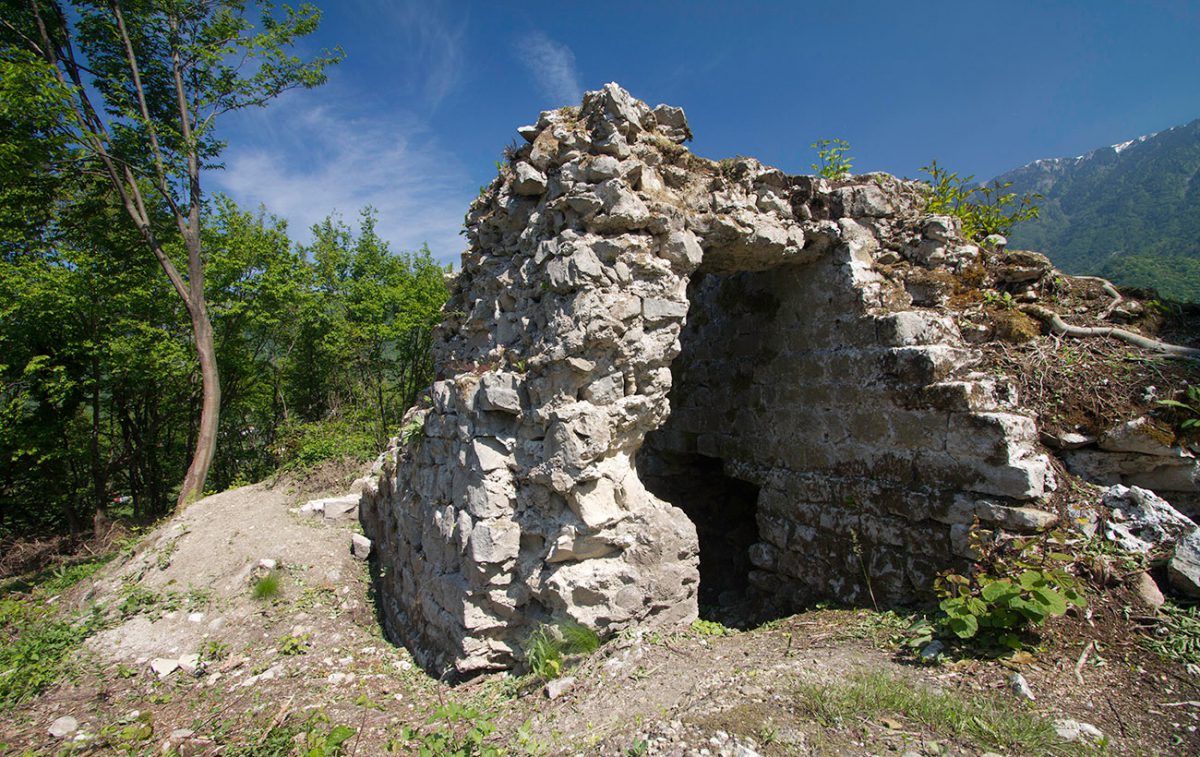
The investitures of the Da Camino and the Castle
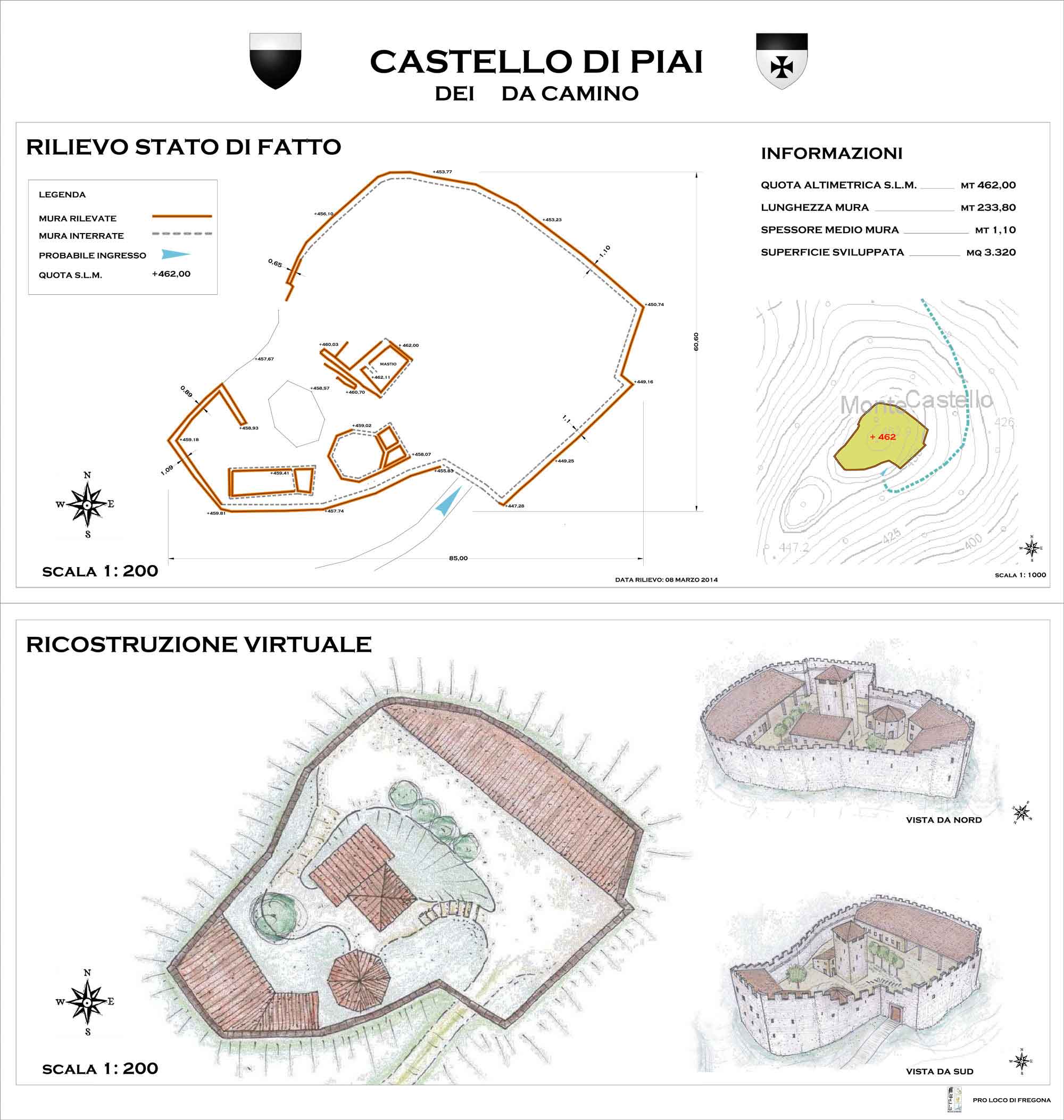
For political reasons, the Da Camino gradually acquired various fiefs , including Fregona, from different entities: Bishop Aimone of Ceneda in 1089, Bishop Druso (or Drudo) of Belluno in 1198, Bishop Filippo of Belluno in 1211, Patriarch Valficherio of Aquileia in 1212, Bishop Alberto of Ceneda in 1233, Bishop Gorzia de Lusia of Belluno, and Patriarch of Aquileia in 1339… However, our purpose here is not to delve into the intricate hereditary causes and the multiple investitures of the Da Camino. What matters is that, according to documents, the Da Camino settled in Fregona between 1089 and 1198, and it is likely that during this period they built the Piai Castle, probably on the remains of a pre-existing settlement .
The date of its destruction is unknown; perhaps the Da Camino's Piai Castle was ruined by Pippo Spano's Hungarians who, from 1411, had invaded the Ceneda territory, demolishing most of the fortresses. Alternatively, it might have been abandoned shortly before, with the decline of the Da Camino at the end of the 14th century. The last mentions found in documents date back to 1383 during the war with the Carraresi.
The next story
From that moment, the castle follows the turbulent events of the family. On February 10, 1242, Biaquino and Guecello Da Camino are declared deposed from all the fiefs in the Ceneda region previously assigned to them, by the judgment of the four Peers of the General Court of Ceneda, for attacking Porto Buffolè and killing the episcopal vicar, mentioning the "castrum Fregone".
In 1246, the castle of Fregona temporarily passes from Tolberto da Camino to Ezzelino da Romano, with whom Tolberto had allied. Ezzelino da Romano was in these parts with bellicose intentions: "essendo il signor Ezzelino da Romano col suo esercito dalle parti di Ponte di Piave, e trovandosi con lui il signor Tolberto ...", "quasi spontanea voluntate..", almost (!! ) spontaneously, he entrusted him with the custody of his castles. However, the castle soon returns to the Da Camino, on May 18, 1261, Biaquino and Tolberto enter into agreements for the division of assets, and among other things, Fregona falls to Biaquino: "Castrum Fregonum cum Fregona".
The castle is mentioned again on September 14, 1296, in the episode of the kidnapping by the Fregona residents in "montibus faedi" in the locality of Cercenedo, under the jurisdiction of the gastaldia of Caneva, of the merchants passing with their load, "cum aliquibuis somis", on the road to the Patriarch – the kidnapped merchants are confined in the castle of Fregona "ad castrum Fregone conduxerunt".
In the early 1300s, the Da Camino allies with the Scaligeri, in 1315 there is a double marriage desired by Guecellone: Rizzardo (VI Novello) with Verde della Scala, Cangrande's granddaughter, Aica (Gaia) with Franceschino, son of Bartolomeo I. This policy antagonizes Treviso, of Guelf faith, and Guecellone is forced to withdraw to Feltre. However, on December 27, 1319, Guecellone requests and obtains, by an act of homage to the Bishop of Ceneda, Manfredo di Collalto, the investiture of Zumelle, Valmareno, Serravalle, Fregona, Cordignano, ...
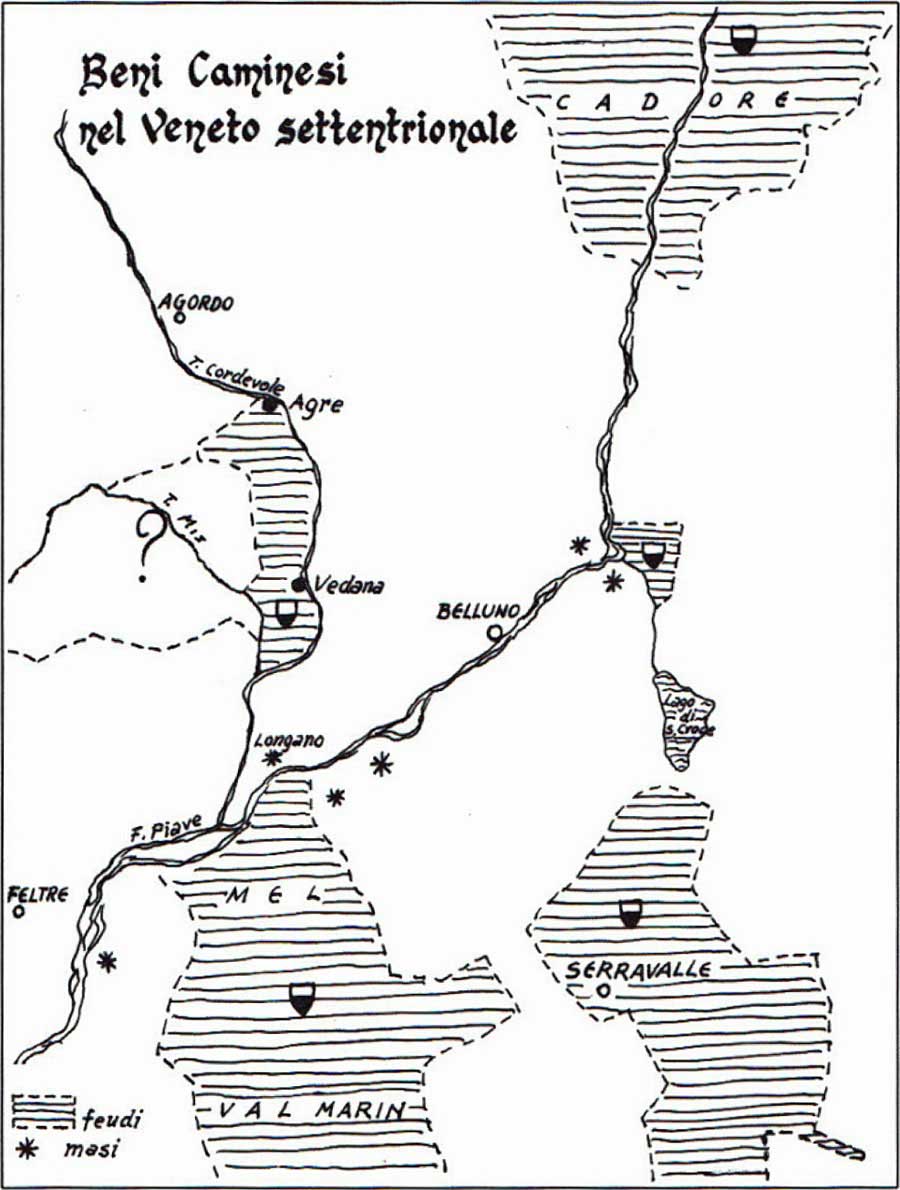
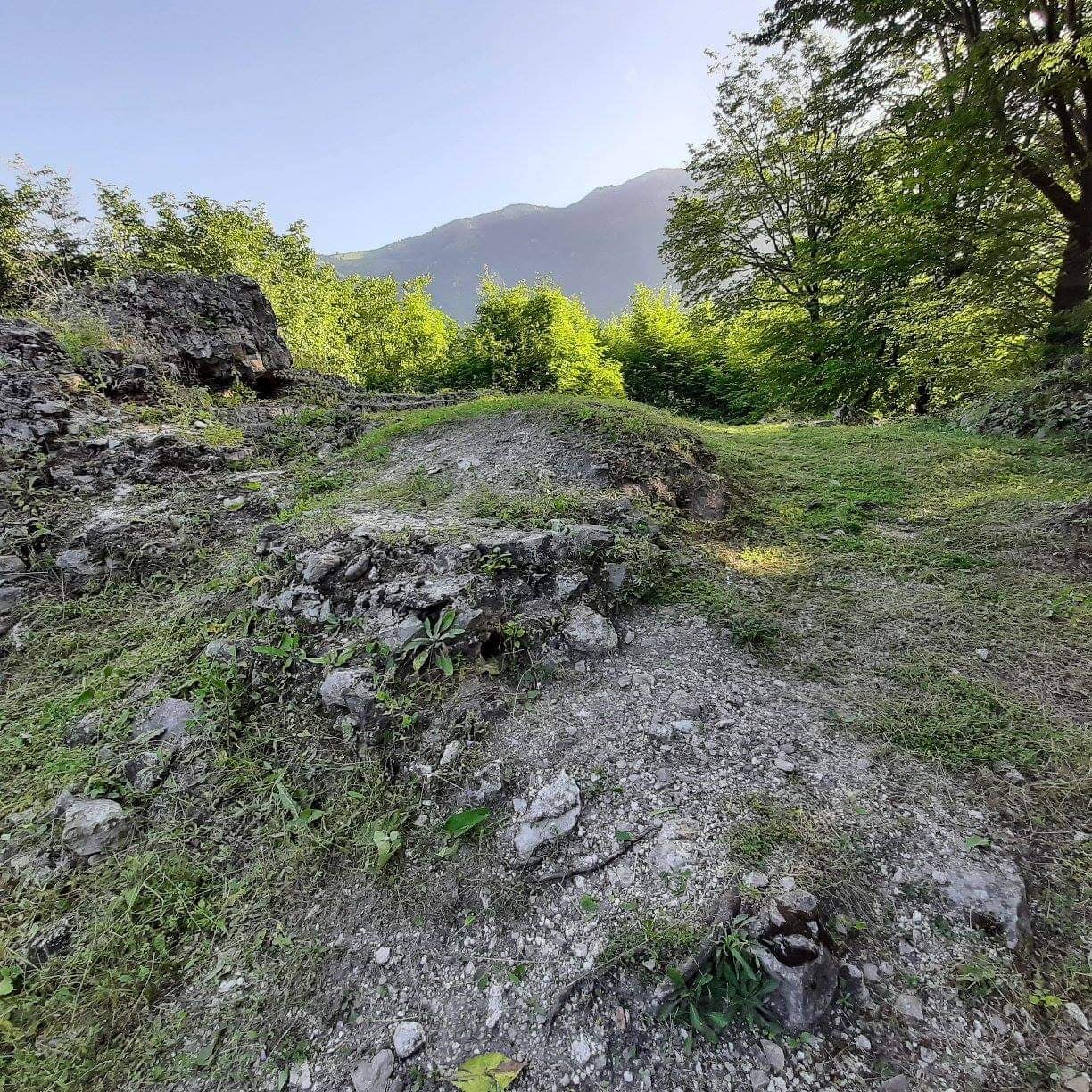
In 1320, Guecellone also reaches an agreement with Treviso, but the della Scala family feels betrayed by this about-face, leading to a confusing period of strife with Cangrande della Scala. This is partly because the Veronese leader aims to gain control of Belluno and Cadore. Following these conflicts, Guecellone compels his son Rizzardo to repudiate Verde della Scala and, on March 22, 1322, negotiates a marriage contract between Rizzardo and Anna, daughter of Ottone II, Duke of Carinthia. The agreement takes place publicly "ad plebem in platea comunis" in Fregona.
Upon returning from Verona in July 1322, where he had gone for peace negotiations with Cangrande, Guecellone is treacherously captured on the orders of the vicar of Padua (and likely Cangrande) and held in prison in Cittadella for eight months. However, in the same year (August 1, 1322), the Bishop of Ceneda renews his investiture, including the castle of Fregona.
The castle of Fregona is again mentioned in the document through which, on September 13, 1323, the Bishop of Ceneda excommunicates Guecello and his son Rizzardo. This excommunication came from Pope John XXII, who, based on the will of Rizzardo, Guecellone's brother, expected to receive certain bequests. Not having received them, he had sent two representatives to "seize" the possessions of the Da Camino.
In November 1324, Cangrande occupies Cavolano, Serravalle, Formeniga, and Fregona. Therefore, with his father Guecellone having died in the meantime, Rizzardo VI Novello regains his wife, Verde della Scala, and his fiefs occupied by his wife's uncle. In 1335, Rizzardo VI, the last of the Da Camino di Sopra, dies from injuries sustained in battle in the meadows of Camolli near Sacile. His pregnant wife, Verde, takes guardianship of their two daughters and the unborn child. However, Verde gives birth to another female, leading to the extinction of the Da Camino di Sopra branch. This poses the risk that, being Verde the sister of Alberto and Mastino della Scala, the people of Verona may assert rights to the inheritance. The Da Camino di Sotto then assert their hereditary rights, but Bishop Ramponi of Ceneda also considers taking over the fiefs because, in his view, the investiture of the Da Camino came from the Bishop of Ceneda.
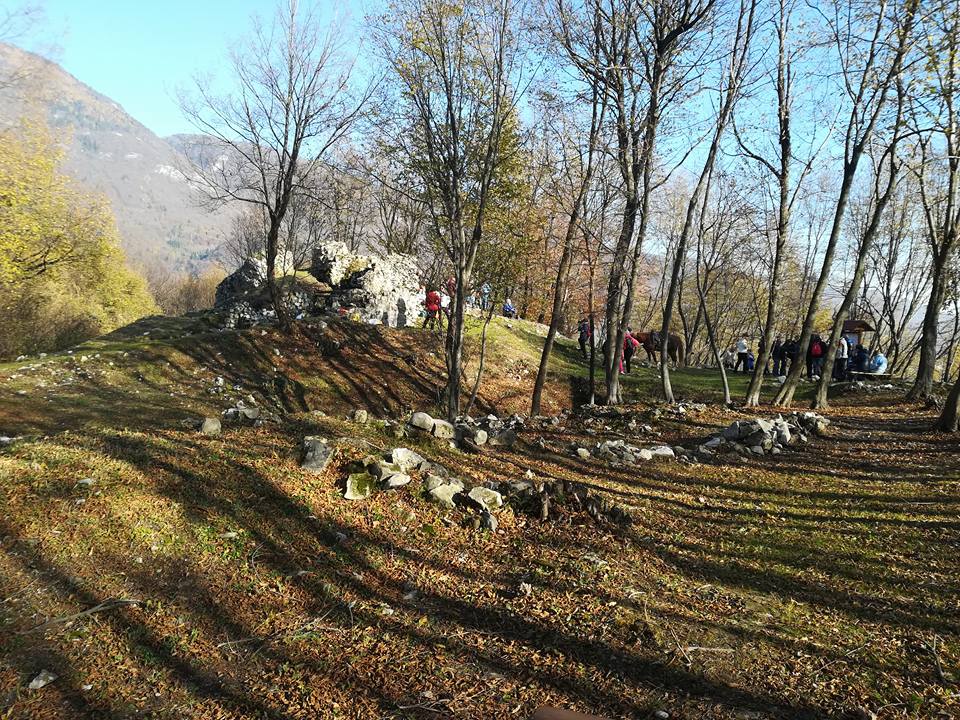
Therefore, on October 12, 1337, the bishop invests three Procurators of San Marco, Marco Morosini, Marco Giustiniani, and Giustiniano Giustiniani, with a certain number of fiefs formerly belonging to the Da Camino, including Fregona and its castle. In return, the bishop reserves half of the revenues. The Da Camino di Sotto, Rizzardo IV, and Gherardo, not very satisfied with this move, react in three ways: they get invested with the disputed properties by the Bishop of Belluno, Gorzia de Lusia, and the Patriarch of Aquileia (March 3, 1339), initiate a legal case (which they will win), and plot a conspiracy against the bishop with the support of the Patriarch of Aquileia. Regarding the conspiracy against the bishop, on January 14, 1340, Pietro da San Lorenzo, an employee of the Bishop of Ceneda, denounces the conspiracy and presents a letter as evidence.
Fregona is at the center of the plot; one conspirator states, "People favorable to the Da Camino of... Fregona will participate..." and the conspirators arrange to meet in Fregona: "in three days, you and I will go to Fregona to speak with your friend Sir Mino, ...". A subsequent document reports an interrogation of the conspirators (February 16, 1340), in which names are revealed: Joannes de Fregona, defined, along with a certain Guerzulus, as "familiares domini Rizzardi de Camino" (familiares means trusted servants or small vassals, editor's note), and it is mentioned that their "base" was in Fregona, from where they went to Ceneda "they came to Ceneda and returned to Fregona" to discuss the murder of the Bishop and the destruction of the castle of San Martino di Ceneda. The conspiracy forces the bishop to seek refuge in Venice for safety, and the dispute concludes in 1343 when the Procurators of San Marco, to avoid further turmoil, renounce the investiture, and the castle returns to the hands of the Da Camino.
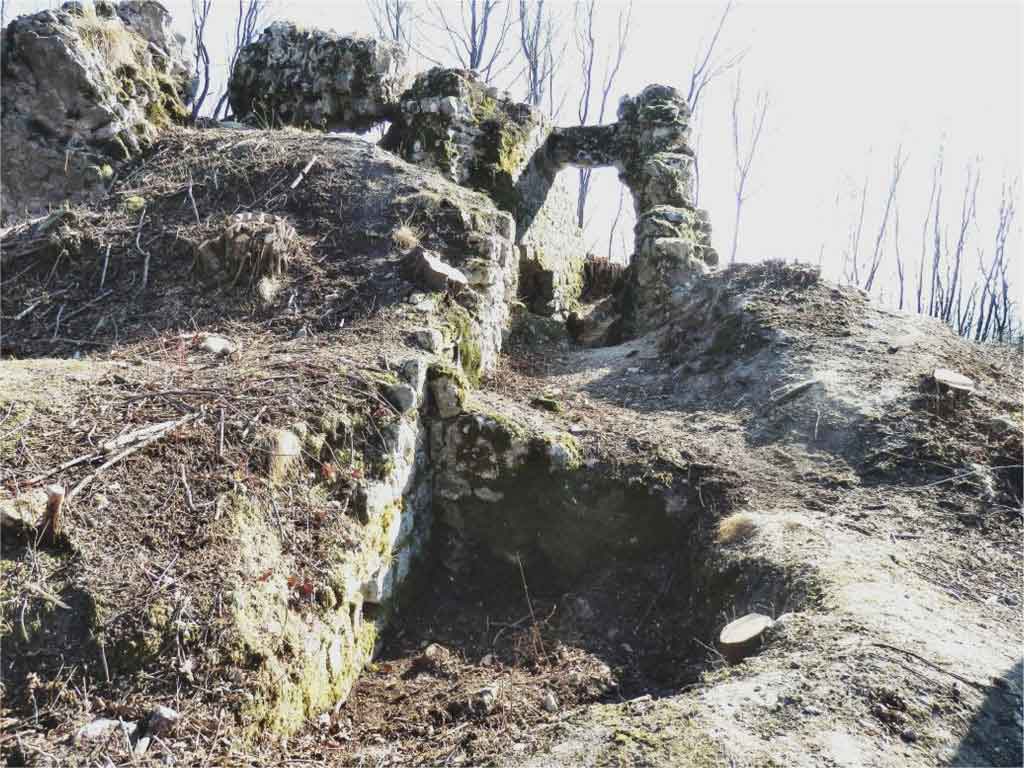
In 1356, the castle became involved in the war between King Louis of Hungary and the Republic of Venice, with local nobles aligning themselves with either side at different times: "..., Fregona, and other castles in the Treviso region, all either ceased to the Hungarian arms by surrendering voluntarily or were taken by assault." Later, in 1372, during the war between the Venetians on one side and the Carrara family and the King of Hungary on the other, Fregona is mentioned in a letter from Doge Andrea Contarini, requesting reinforcements: "promptly arrange to enlist infantry, mercenaries if necessary, or trustworthy subjects from Fregona and Solighetto."
In 1383, the castle of Fregona is once again involved in the war between Venice, Francesco da Carrara, and Leopold III, Duke of Austria. Guecellone IX, who fought alongside the Venetians, is wounded and captured. Fregona and the other fortresses in the region surrender with little resistance. On October 15, 1383, "the Lord of Padua, after the capture of the castle of Cordignano belonging to Lord Guecello da Camino, occupied and holds... the Castle of Fregona... of the said Lord Gherardo (brother of Guecello, editor's note)."
Guecellone is presumed dead in Portobuffolè in 1390. His brother, Gherardo VII, having earned the hatred of Francesco I da Carrara, lost the castles of Cordignano, Motta, and Fregona, remaining a prisoner in Padua for several years. Liberated at the end of 1390, he sought refuge with his son Ercole near Jacopo da Porcia and died the following year. With these two brothers, the history of the Da Camino practically comes to an end, although secondary branches and heirs survived without any political or military relevance.
Here concludes the history of the castle, and the date of its destruction is uncertain. In his chronicle of the war that opposed Venice to Sigismondo of Hungary from 1411, spreading destruction as far as Marostica and Bassano, Verci does not mention Fregona, although recalling, for example, Cordignano and Valmareno. This may not be significant, and the castle might have been destroyed in those circumstances. Alternatively, it could mean that the castle, traditionally passed on to Salatino Scotti ("King Salatin"), who certainly was not a warrior, having lost all military function and perhaps damaged in 1383, was abandoned or repurposed for other uses.
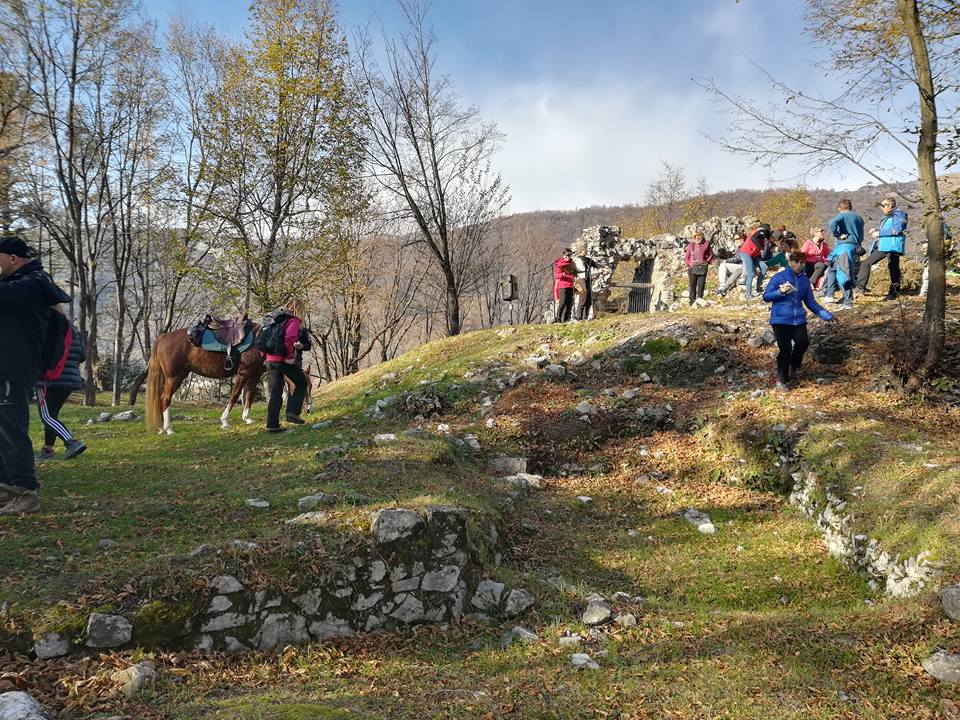
Seals of "Da Camino"
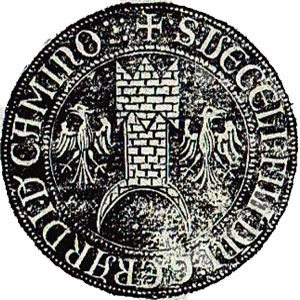
“S (Seals of) VECELI (Guecello) FILII (son of) DNI (Mr) GERARDI (Gherardo) D (Da) CAMINO”
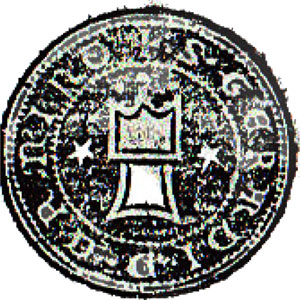
“S (Seals of) GERARDI (Gherardo) D (Da) CAMINO”
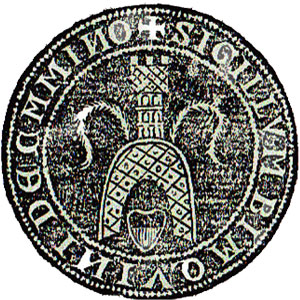
“SIGILLUM (of) BIAQUINO DE CAMINO”
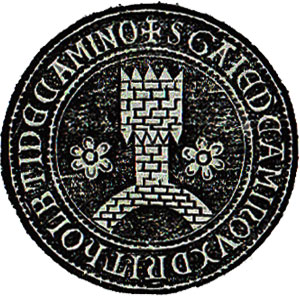
“S (Seals of) GAIA D (Da) CAMINO UX(oris – wife of) DNI (domini – Mr) THOLB(er)TI DE CAMINO”
Historical maps
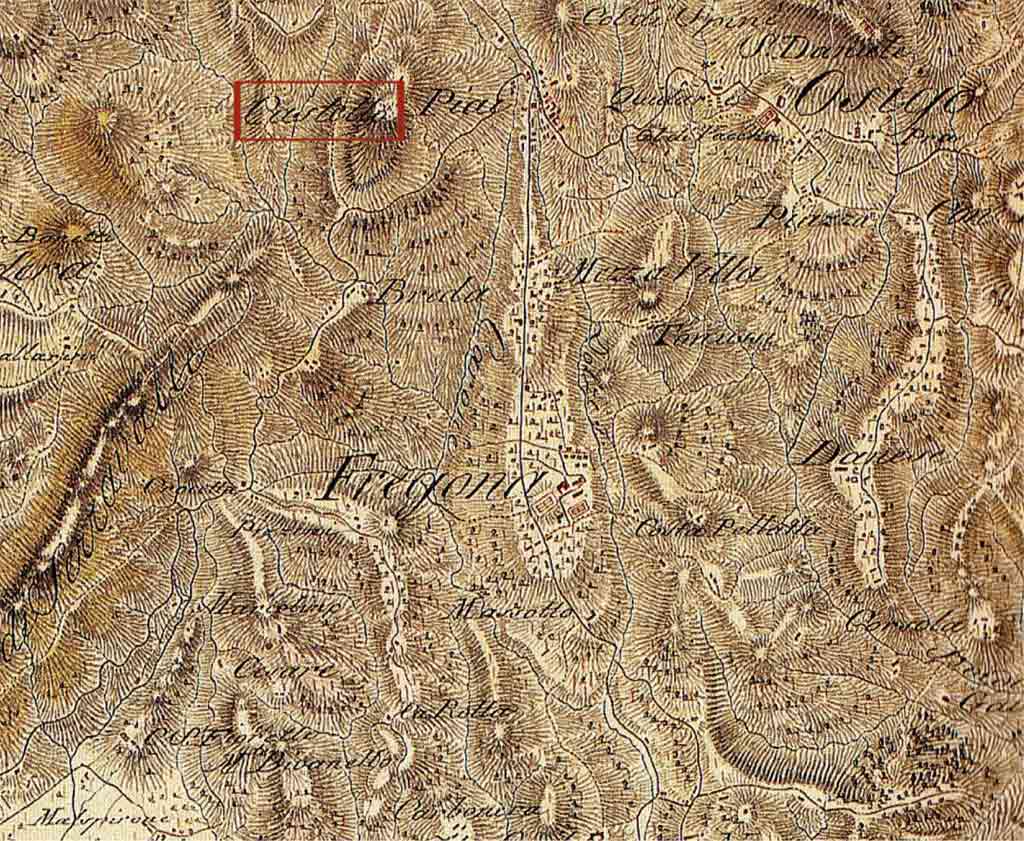
Austrian Kriegskarte (1797-1805) with the castle and a trail of access from Mezzavilla which now no longer exists.
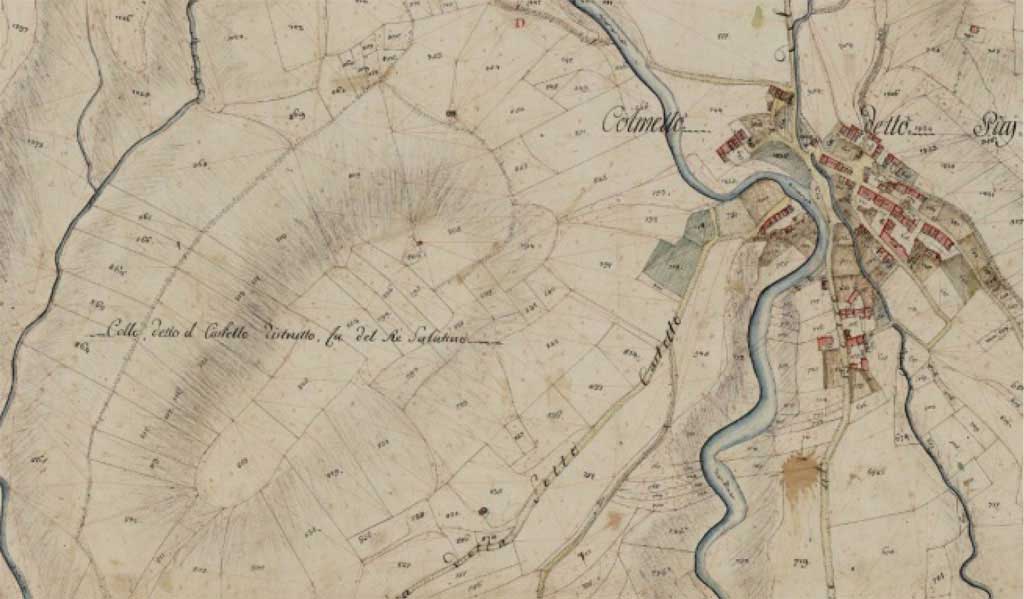
Napoleonic cadastre (1810) in which it is indicated “Colle said the destroyed castle was of King Salatino”
The Bell Tower of Fregona
The idea of boulding the Bell Tower
The preparations for the construction of the current beautiful bell tower can be traced back to the winter of 1869-1870. Encouraged by the parish priest, Father Antonio Dalla Rosa, efforts began to gather the necessary materials. However, due to encountered difficulties, the work was abandoned, and the already accumulated material was used for other purposes, partly stolen at night.
From the year 1880, the idea of building the bell tower seemed to progress smoothly, without further obstacles.
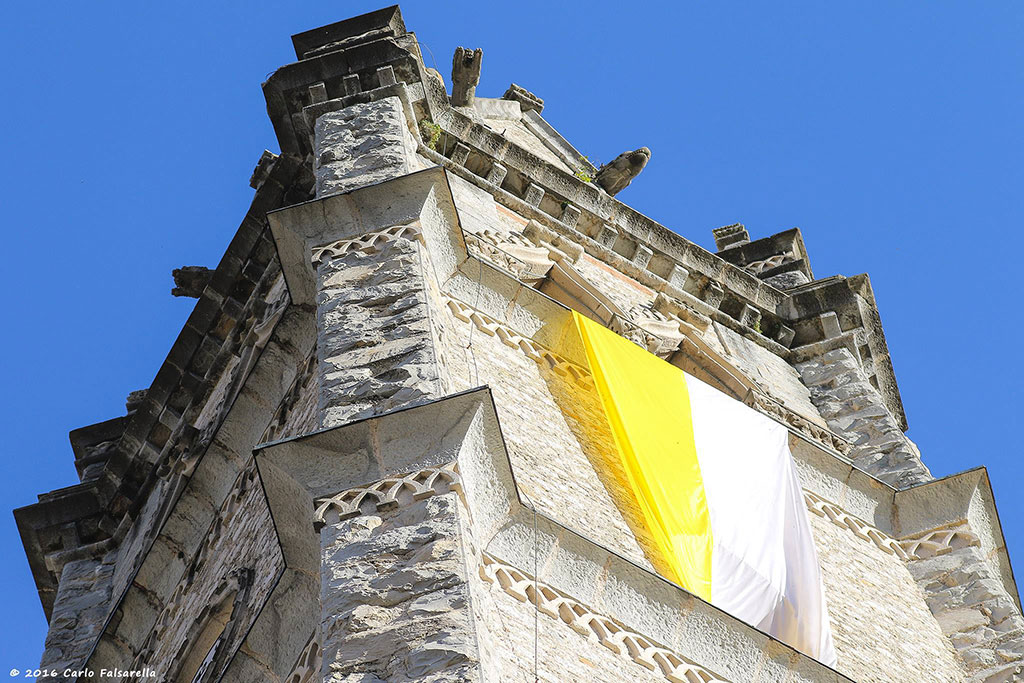
The foundations
Thanks to the initiative of Parish Priest Don Andrea Tomé, who had already shown exceptional resourcefulness in repairing the parish church and the rectory severely damaged by the earthquake of June 29, 1873, proved decisive for the construction of the bell tower. He not only constantly and warmly advocated from the pulpit but also, to facilitate the transport of heavy stones from Masaré, even devised a special type of cart, called "car mat," with two wheels without sides, pulled by oxen, but also by hand.
On February 6, 1881, Don Andrea proceeded to have a special commission appointed by the population, chaired by himself, which immediately got to work, initiating the excavation of the foundations from the 15th of the same month.
Thanks to the initiative of Parish Priest Don Andrea Tomé, who had already shown exceptional resourcefulness in repairing the parish church and the rectory severely damaged by the earthquake of June 29, 1873, proved decisive for the construction of the bell tower. He not only constantly and warmly advocated from the pulpit but also, to facilitate the transport of heavy stones from Masaré, even devised a special type of cart, called "car mat," with two wheels without sides, pulled by oxen, but also by hand.
On February 6, 1881, Don Andrea proceeded to have a special commission appointed by the population, chaired by himself, which immediately got to work, initiating the excavation of the foundations from the 15th of the same month.
The entire population of the parish, without distinction, based on pre-established shifts among the eight hamlets, worked tirelessly and with great enthusiasm. Some dug the foundation well, 20 meters deep, with a square base of 12 meters per side, while others removed the large quantity of excavated soil (840 cubic meters) with baskets and placed it all around the church, leveling the spacious square above the road.
The work primarily took place on holidays, but many weekdays were also necessary; moreover, it is remembered that the Sonego hamlet, on multiple occasions, sent batches of bread to the people working.
On December 21, 1881, after over ten months from the start of the excavation, everything was ready for the solemn ceremony of laying the first stone of the foundations. At two o'clock in the afternoon, the chancellor of Bishop Cavriani descended into the foundation well to place there, at a point where the clearest water gushed, the blessed stone enclosing a parchment and current coins.
It took a full three years to complete the masonry of the foundations, which had the shape of a rectangle with sides four meters thick while keeping the inner wall circular, resembling a well, a design that would be maintained unchanged to the top.
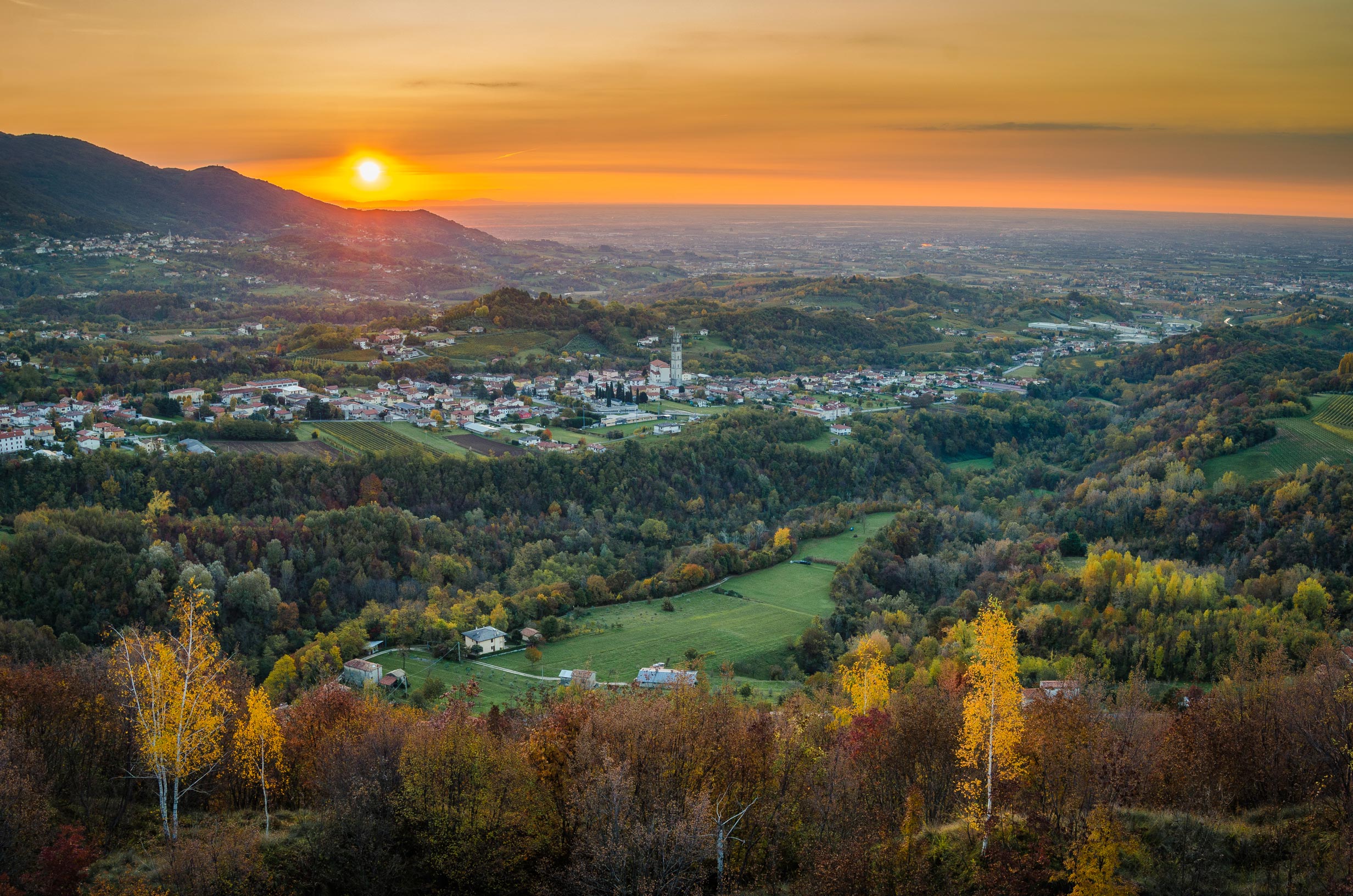
The designer and sculptor Francesco Ciprian
The chosen design for the construction of the bell tower was created by the sculptor and native designer of Fregona, Francesco Ciprian, who was said to have conceived it when he was an emigrant in Austria, drawing inspiration from the Votive Church in Vienna [the resemblance, however, is found in the towers of the Vienna Rathaus (editor's note)].
Determined to leave a monument to his land that would testify to his skill and love through the centuries, he approached the task with trepidation. Not only did he meticulously oversee the design, but he also personally supervised its execution moment by moment. The difficulties were numerous and varied, but what bothered him the most were the constant interferences from certain fellow villagers, whose arrogance he found unbearable to the point that one day he withdrew his drawings, resolved not to collaborate any longer. Fortunately for us, he later reconsidered his decisions; otherwise, we would not be able to admire the completed work with all the decorations that have made it famous, including the elegant bell chamber, the daring spires, and, in part, those unique "acquaroi" at the top, fantastic evocations of dragon and lion heads, marvelous sculptures also crafted by his skilled hands as a stone carver.
Francesco Ciprian was born in Osigo on June 2, 1840, and later moved to Vittorio Veneto, where he passed away on December 7, 1918.
His design drawings for the bell tower were lost during the bombings of Treviso, where his niece, who possessed them, lived.
The second step of work (1885-1891)
On April 6, 1885, the secretary of Bishop Cavriani blessed a second stone, which was placed above the foundations, now reaching the level of the square, at the corner facing the church, where the foundation wall is deeper due to less stable ground.
From this moment, the second phase of the work begins, which will bring the bell tower to the height of the first windows, abruptly interrupting in 1891 due to the sudden departure of Archpriest Don Andrea Tomé, the tireless driving force behind the project.
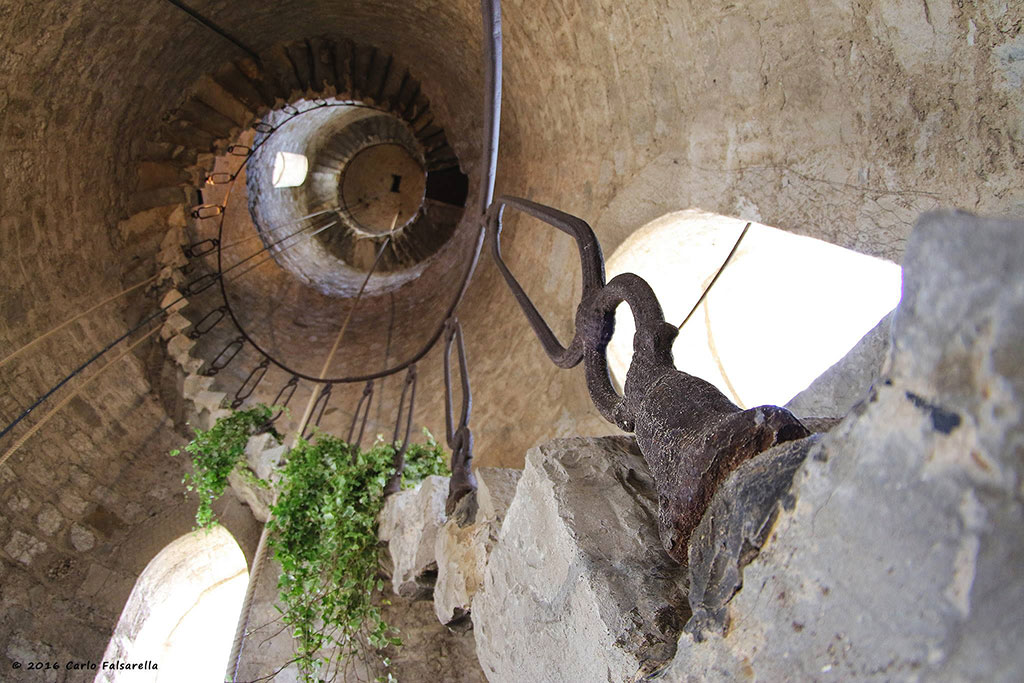
The third step of the works (1891-1909)
In November 1891, Archpriest Don Angelo Ferro was appointed. Realizing that the construction of the bell tower, not yet halfway completed, needed a new impetus, he immediately proceeded to appoint a new commission, chaired by Candido Azzalini, whose work proved decisive for the completion of this prestigious monument.
Repeatedly, whenever the commission president requested it, he issued urgent appeals to the population to contribute, with the means available to each, to the realization of the project, reminding everyone that each had "a much more important job to do in the countryside."
Hoping to complete the bell chamber by the end of the year, on June 26, 1897, Candido Azzalini, still on behalf of the Commission, asked the archpriest to deliver words of encouragement in church for those who had not yet paid "the promised installment for the bell tower, now that people are about to collect money from the sale of silkworm cocoons or the first batches of cheese," also threatening to publish their names if the deficit situation persisted.
On the threshold of the new century, "amidst jolts and shakes," meaning with more or less substantial financial contributions from public entities and private individuals, "the Bell Tower Construction," which had already completed "such a beautiful and advanced work," was now ready for the final leap.
On January 12, 1907, the Bell Tower Construction sees the most tireless and committed promoter, Candido Azzalini, pass away at the age of just 57.
The bell tower remained, and still is, lacking its spire; it is said to have been as much as 12 meters tall, starting from the base of those fascinating eight spires, ending with the characteristic finial, reminiscent of "the mystical number of the eight beatitudes of the Gospel according to St. Matthew, the highest perfection of virtue and the cause of our hope." The most representative work of Fregona, however, remained incomplete, certainly not due to a lack of generosity from its people.
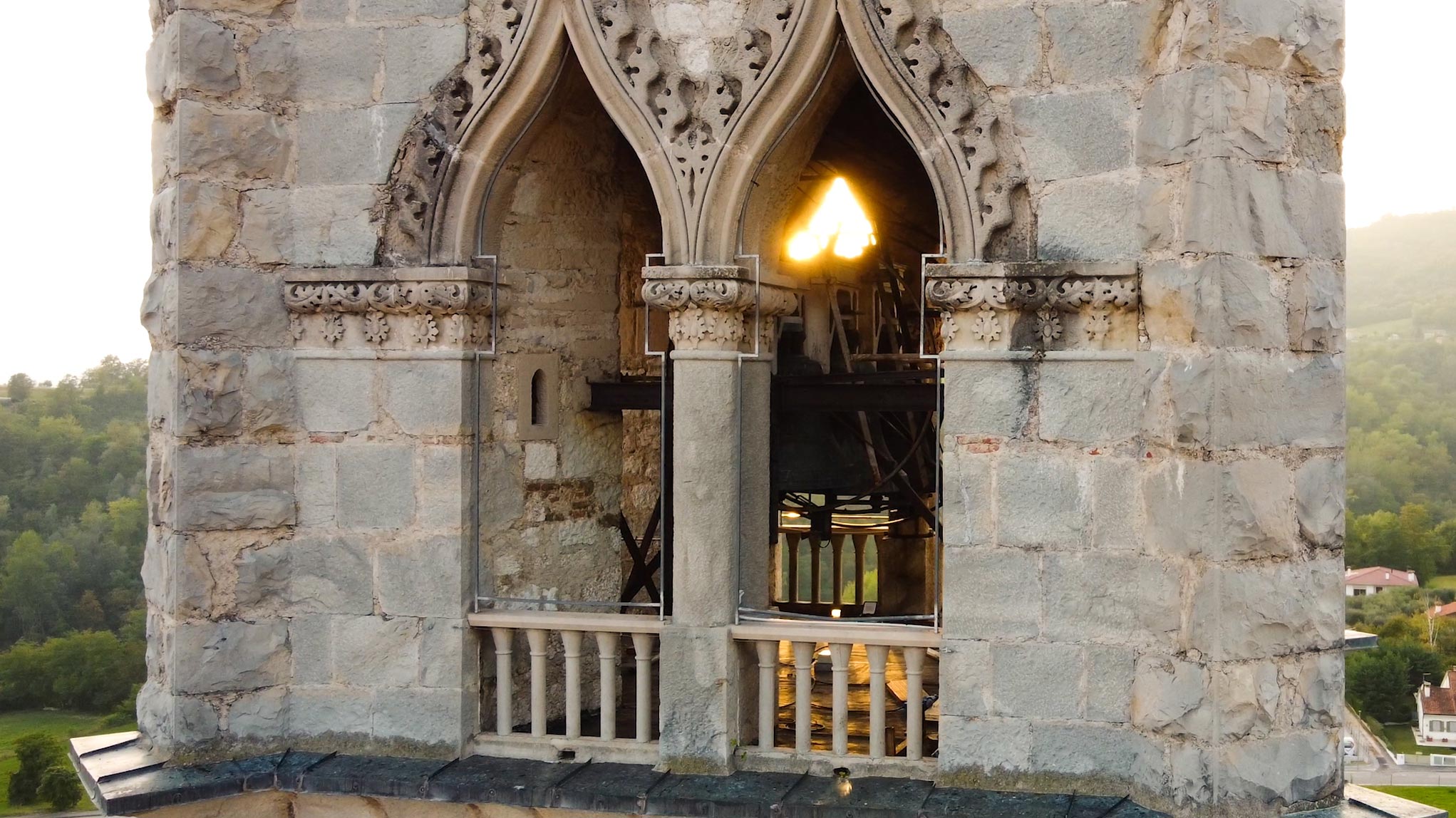
The Bells
It wouldn't make sense to talk about a bell tower without remembering its bells. Perhaps to someone today, obsessed with our noise-filled society, their peals may be annoying, but we must not forget that they in the past marked our days and, ringing out for various occasions, be it joyous or solemn, they marked the most important stages of everyone's life.
Indeed, the "thirds" and the "joys," especially those played by the young people of Breda, were famous throughout the area, inspiring one of the most celebrated and poetic passages in the novel "Il più forte" by the Vittorio Veneto writer Emilio Zanette.
Starting from Easter 1961, the bells had to be electrified; as then-archpriest Don Raffaele Lot wrote, "We are proud to have (after the Cathedral) the third-largest set of bells in the diocese, and we don't have the satisfaction of hearing the thirds as before because the strength is lacking."
However, there are still some elderly people who miss the regular and poetic "triple concert" of the past when it was guided by skillful hands and attentive ears, spreading gently through the valleys "like old voices awakening a religious emotion in distant homesteads."
The adventures of the three large bells, two of which were cast in 1907, made to fall from the top of the bell tower, and then removed by the invading Austrians on June 4, 1918, are known to have been recounted by Monsignor Toja in one of his manuscripts. It is also noted that the "barbarian invaders" damaged the bell tower clock, the one preceding the current one, with Roman numerals.
On March 23, 1920, amidst enthusiasm and general emotion, the three new bells, recently cast by the De Poli company in Vittorio Veneto, were transported to Fregona on sturdy carts pulled by oxen.
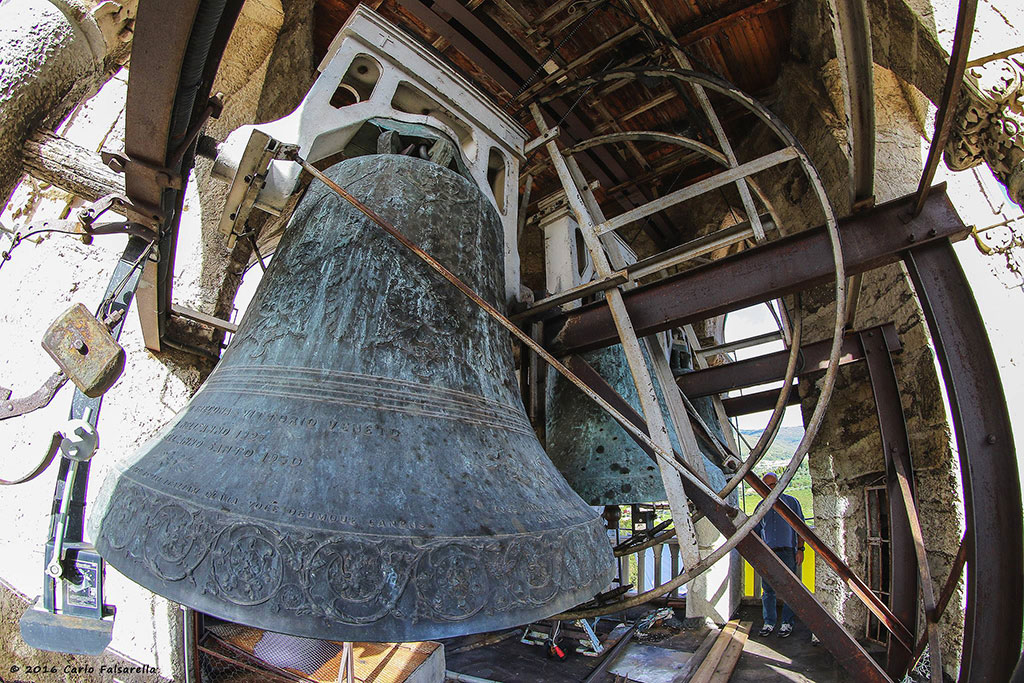
The largest of these, weighing 2220 kg, broke on February 8, 1927. The three new bells arrived from Bassano on October 29, 1927; on the same day, the three old bells departed for the same location. After only a few months, the handles holding the two smaller bells to the stocks broke. The new bells were consecrated by Bishop Beccegato on June 8, 1928.
The large bell (♪ B3) was recast in 1950 and is dedicated to "Santa Maria Assunta." The medium-sized bell (♪ C4) is dedicated to "San Martino" and was recast in 1994. The small bell (♪ D4) still dates back to 1927.
Damage caused by the earthquakes of 1936 and 1976
The earthquake on October 18, 1936, although less intense and less disastrous than the one on June 29, 1873, still caused serious damage to the town of Fregona. The prohibition imposed by the parish priest on the operators of the merry-go-rounds to set up, as usual, at the foot and around the bell tower during the traditional festival on the third of October turned out to be providential. This is because the violent and prolonged jerky and undulatory shocks that occurred precisely on the morning of the festival at 4:10:22 AM caused all four pinnacles on the sides of the bell tower to fall.
Even the recent earthquake on May 6, 1976, which struck with particular force the northern part of Friuli, caused one of these pinnacles to fall. It tumbled to the ground, dragging with it the electrical transmission system for the bells, as well as a balustrade for a length of 10 meters. The repair works were promptly carried out by the parish priest, Don Raffaele Lot, who had previously constructed the new cement balustrade of the bell chamber. He also provided the latter with new cast iron supports for the bells and renewed the lightning rod system.
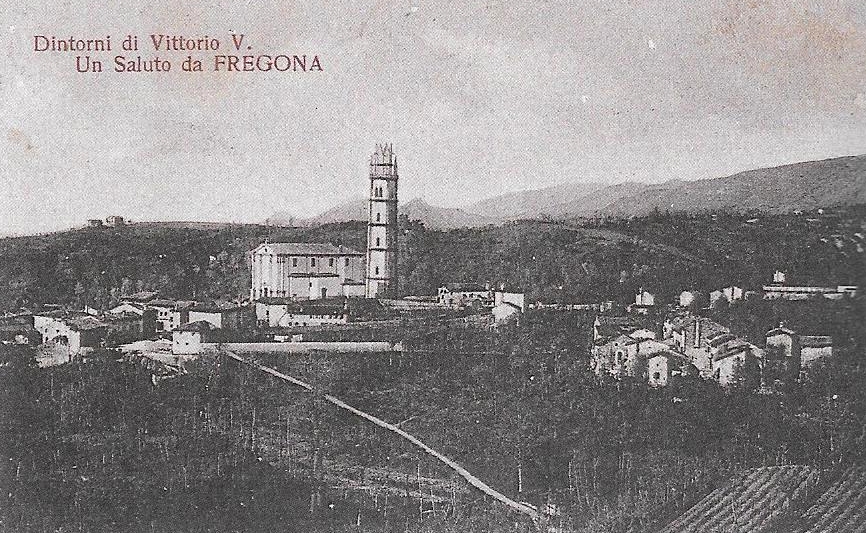
Artistic notes
Fregona is distinguished by a historical and artistic heritage, sometimes marked by significant works, such as the famous "Altarpiece of Saint George", painted by Francesco da Milano in 1529, now in the parish church of Osigo. Another notable piece is the "Crucifix and Souls in Purgatory" by Sebastiano Ricci, painted in 1704, located in the archpriest's church.
The archpriest's church also houses sculptures by the master of Canova, Giuseppe Bernardi Torretti, along with two paintings from Titian's workshop: "Madonna and Child with Saints Titian and Biagio" by Cesare Vecellio and "Saint John the Baptist with Saint Lucy and Saint Catherine of Alexandria" from 1575, a work by Orazio Vecellio. On the church ceiling, a large fresco by the Venetian artist G. C. Bevilacqua, dating back to 1826, can be admired. Also noteworthy is the organ located above the choir, built by Zuane da Limana in 1873. Numerous are the lesser-quality artworks, yet equally important as expressions of the physical and social environment of those who created them, reflecting the good taste of the inhabitants.
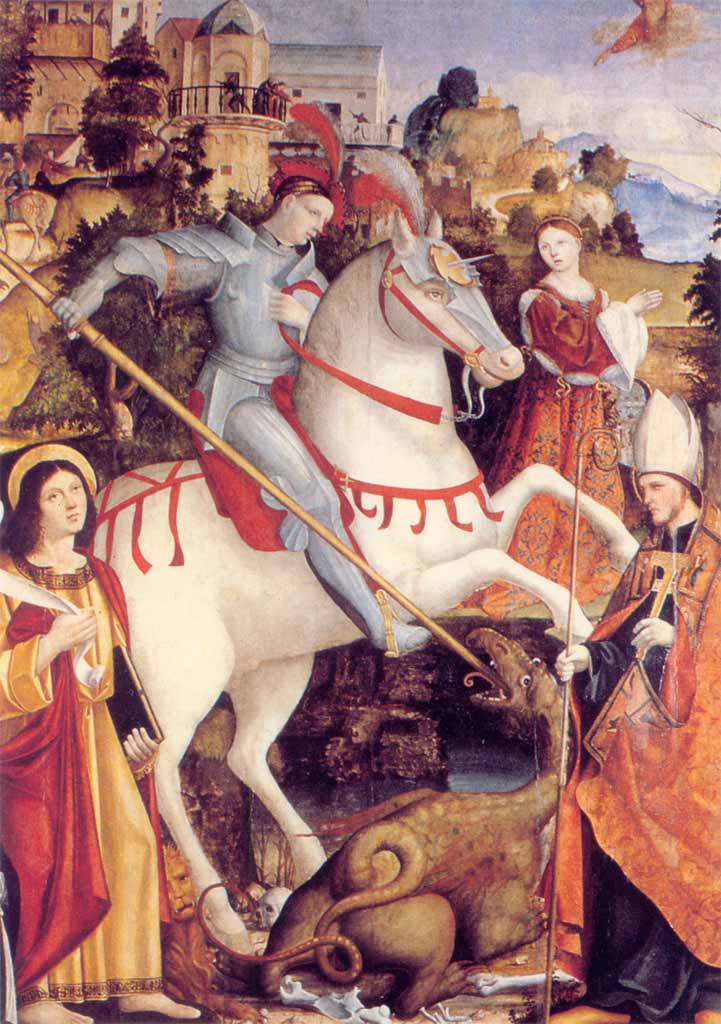
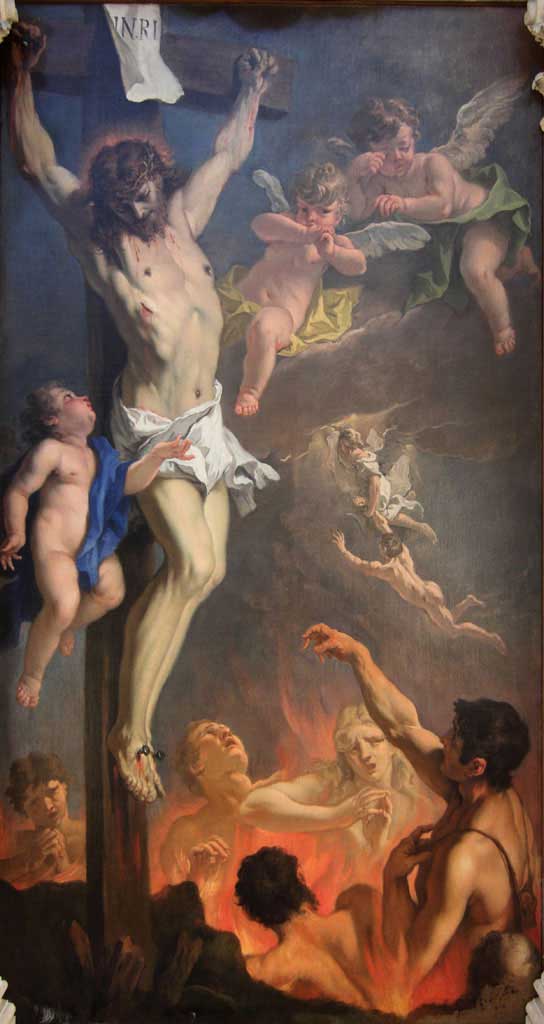
Manor houses
The territory is also marked by numerous noble villas, reflecting the decentralized influence of Venice. In particular, the seventeenth-century Villa Troyer-Lucheschi De Mori-Salvador Bacchiani stands out for its elegance and harmonious rhythms. Other notable villas include Villa Altan-Pancetti at Fratte, Todesco-Salvador at Buse, Villa Laurenti in Danese, Villa Giustiniani in Borgo Piazza, Villa Casoni in Coisola, and Villa Carnielutti in Osigo. Also of interest are the numerous wayside shrines and historic centers like those in Sonego, Piai, Osigo, characterized by houses featuring exposed stones.
